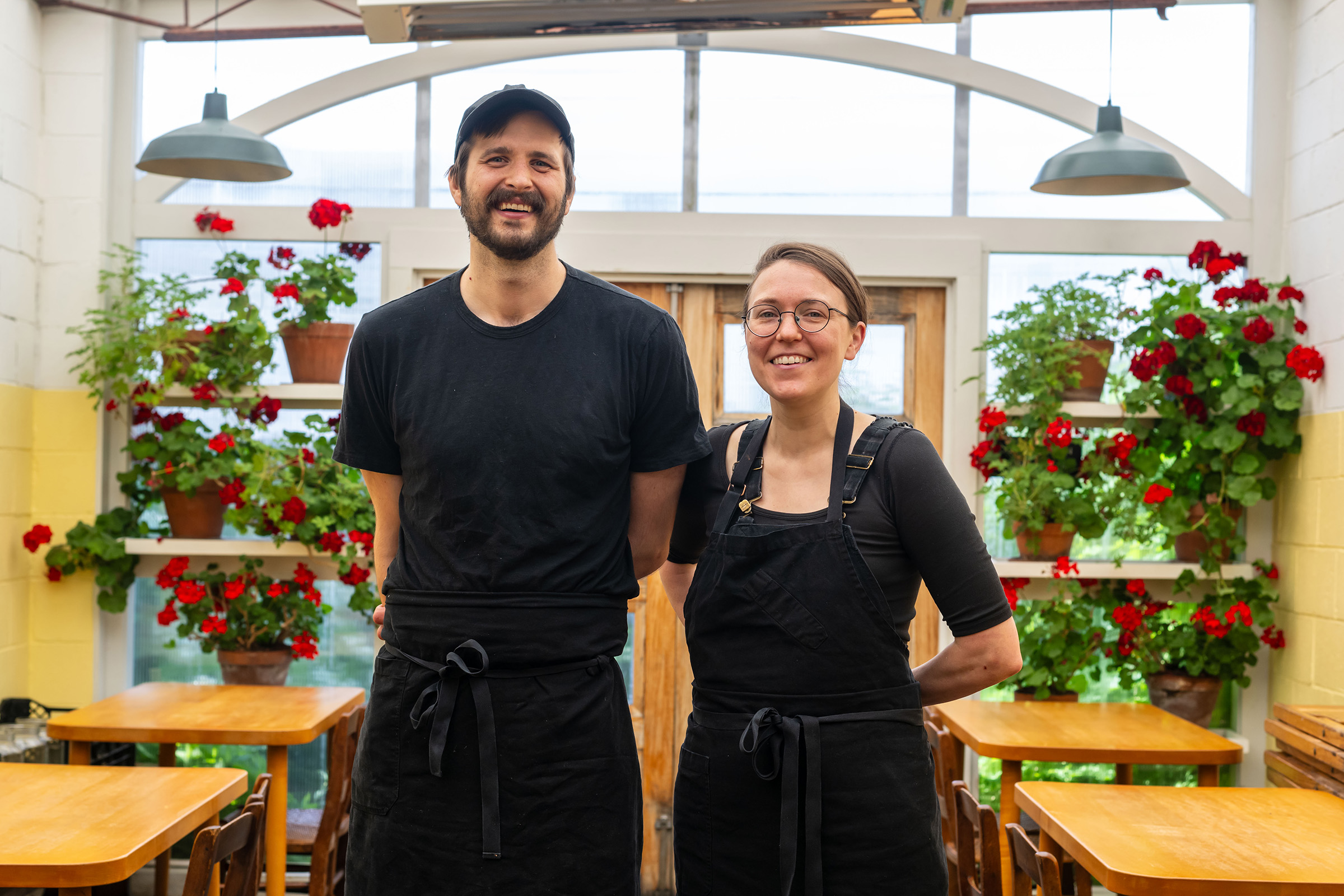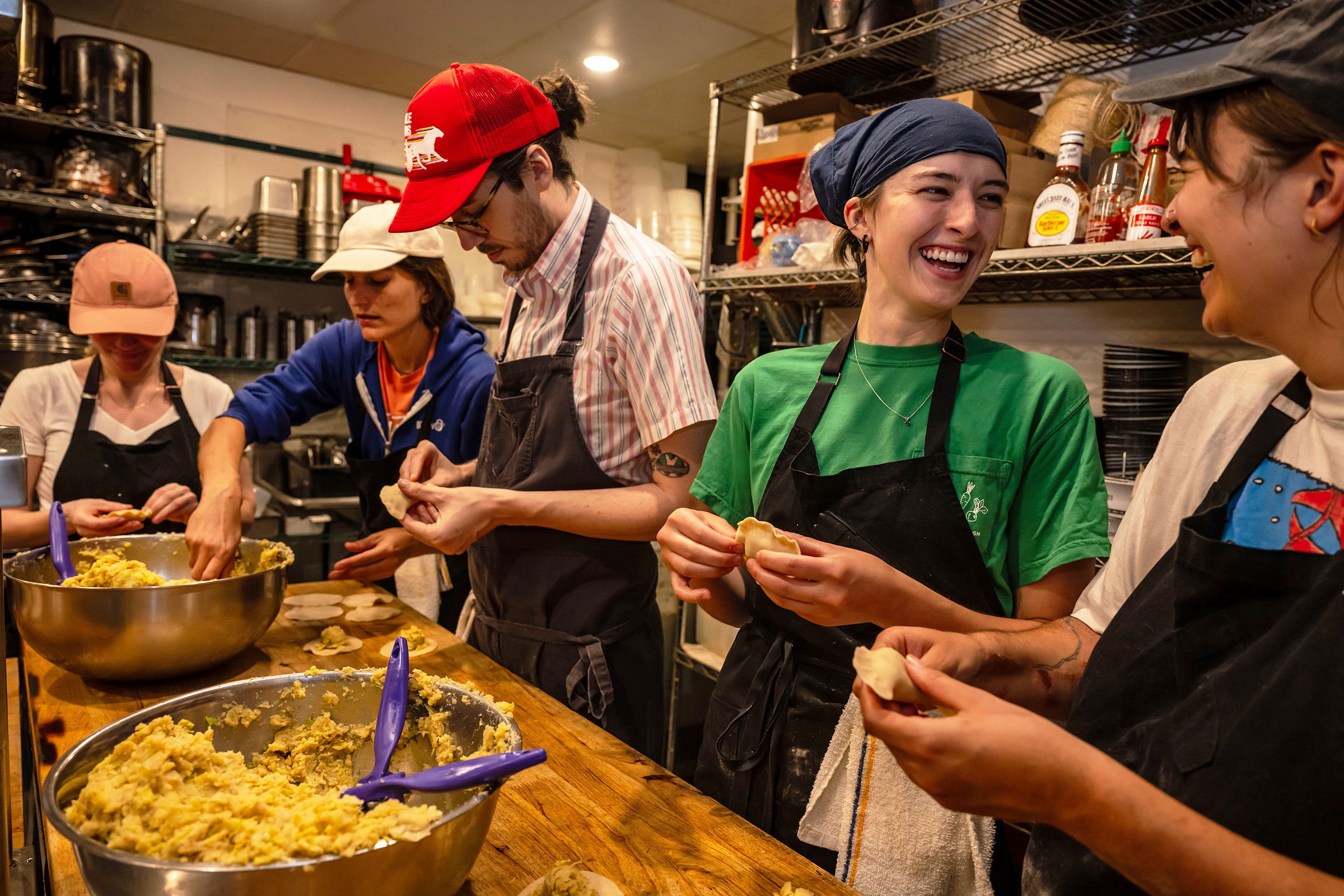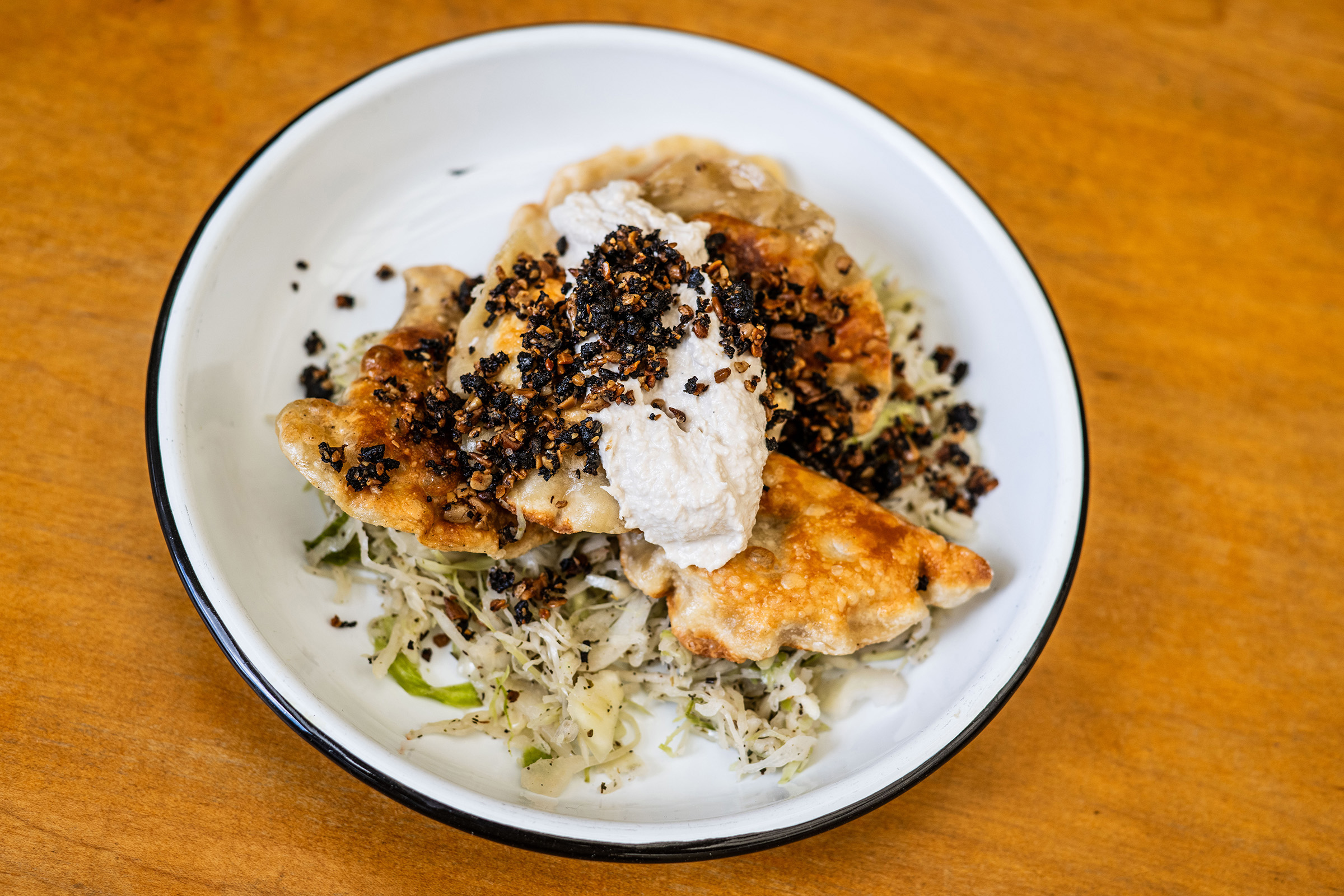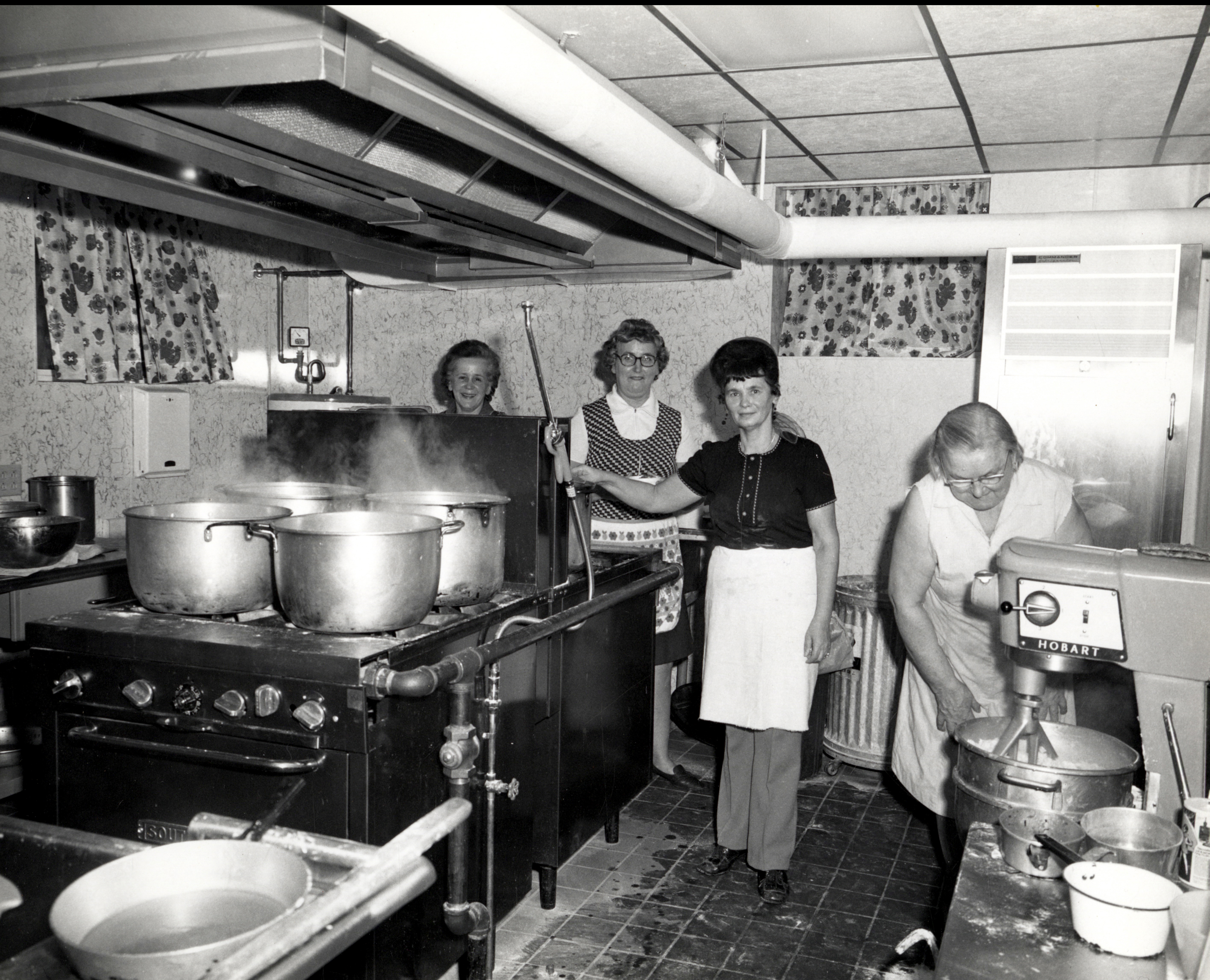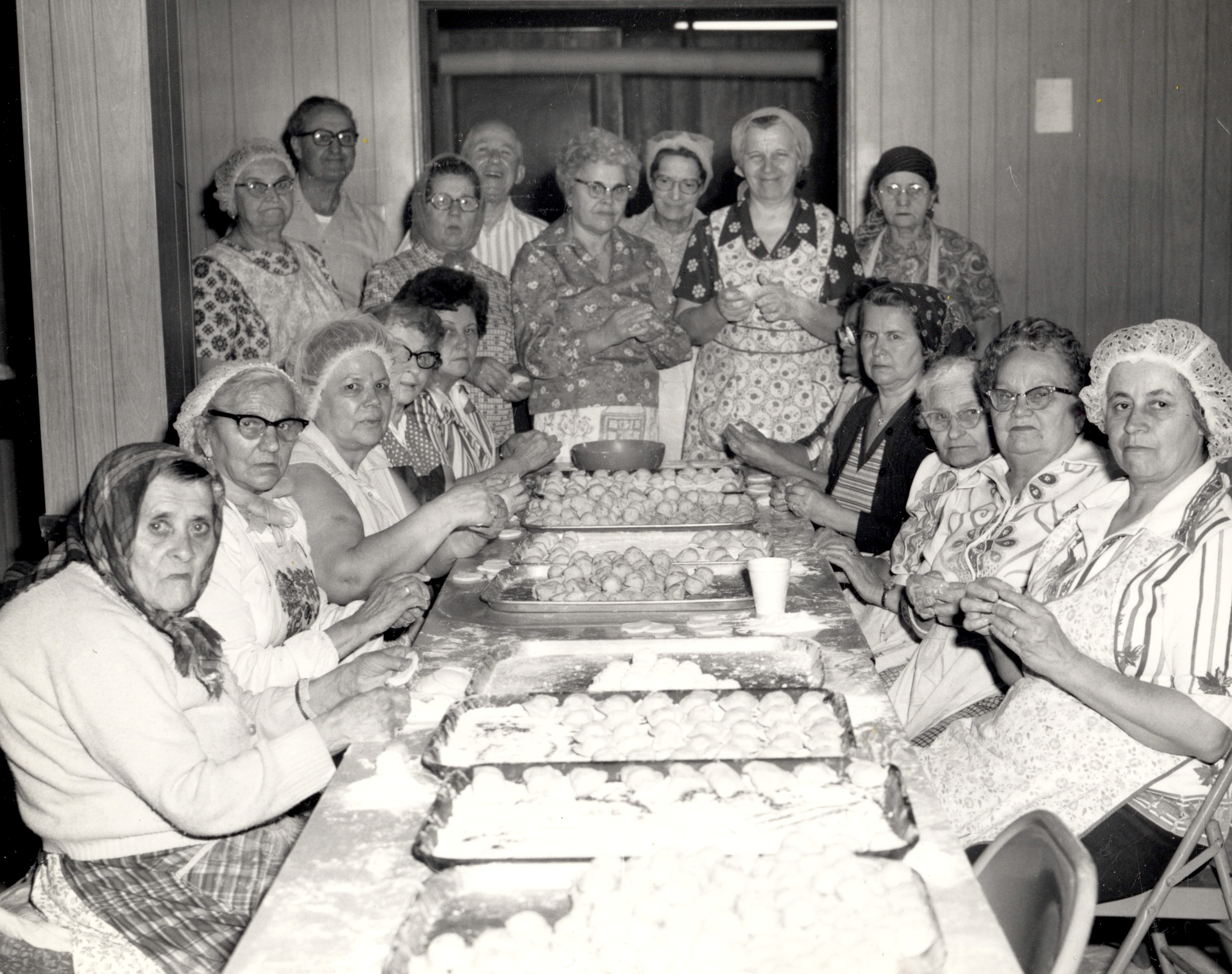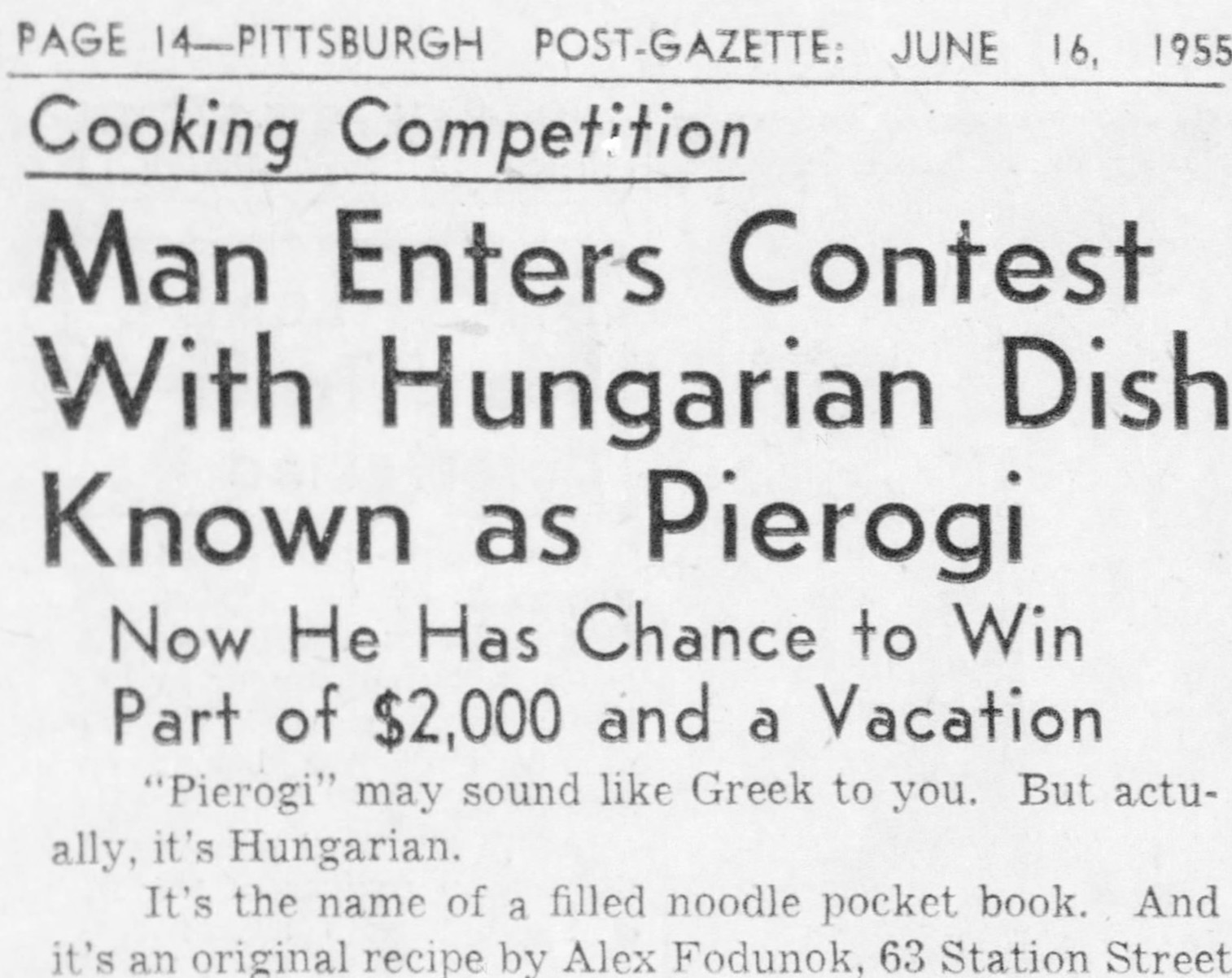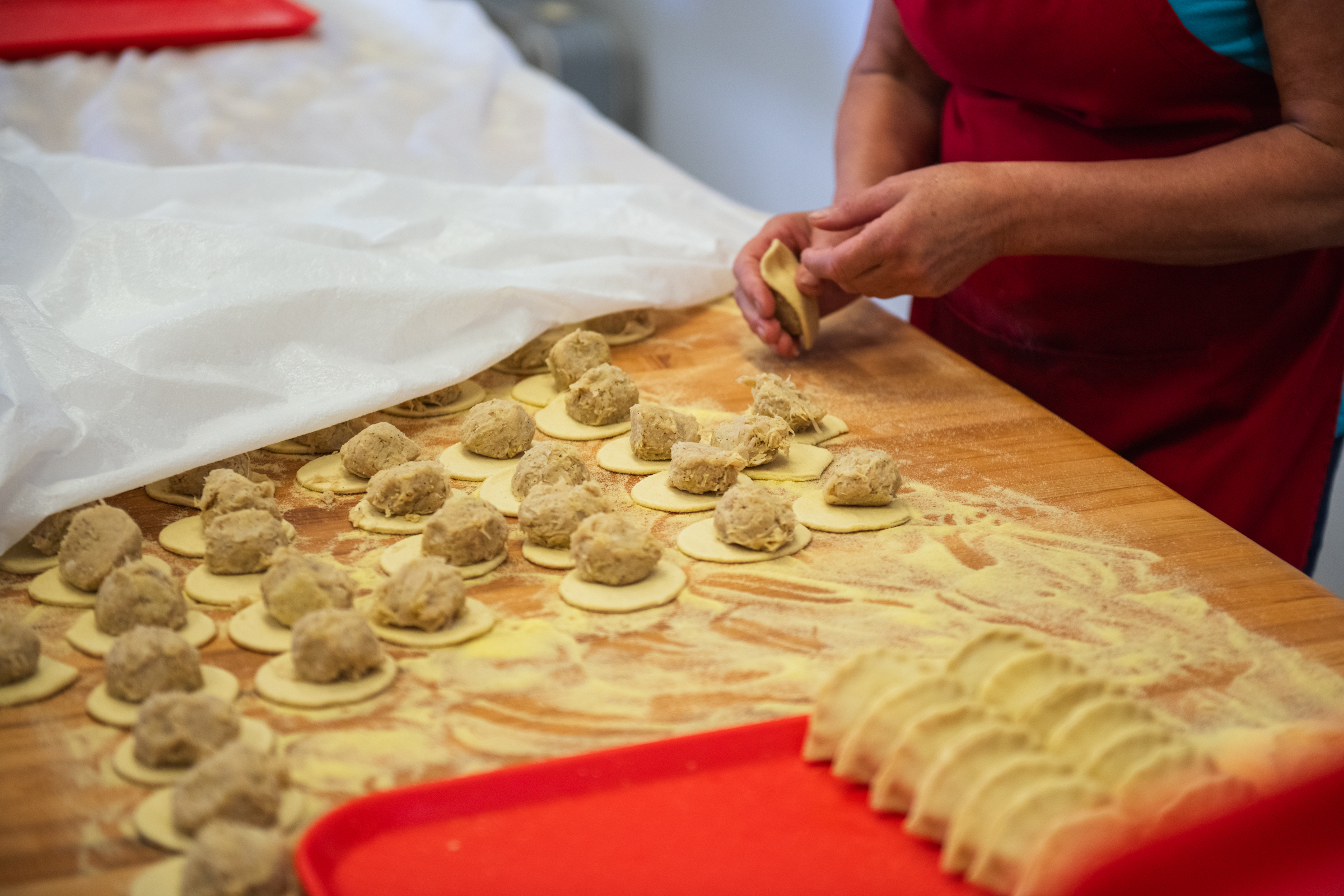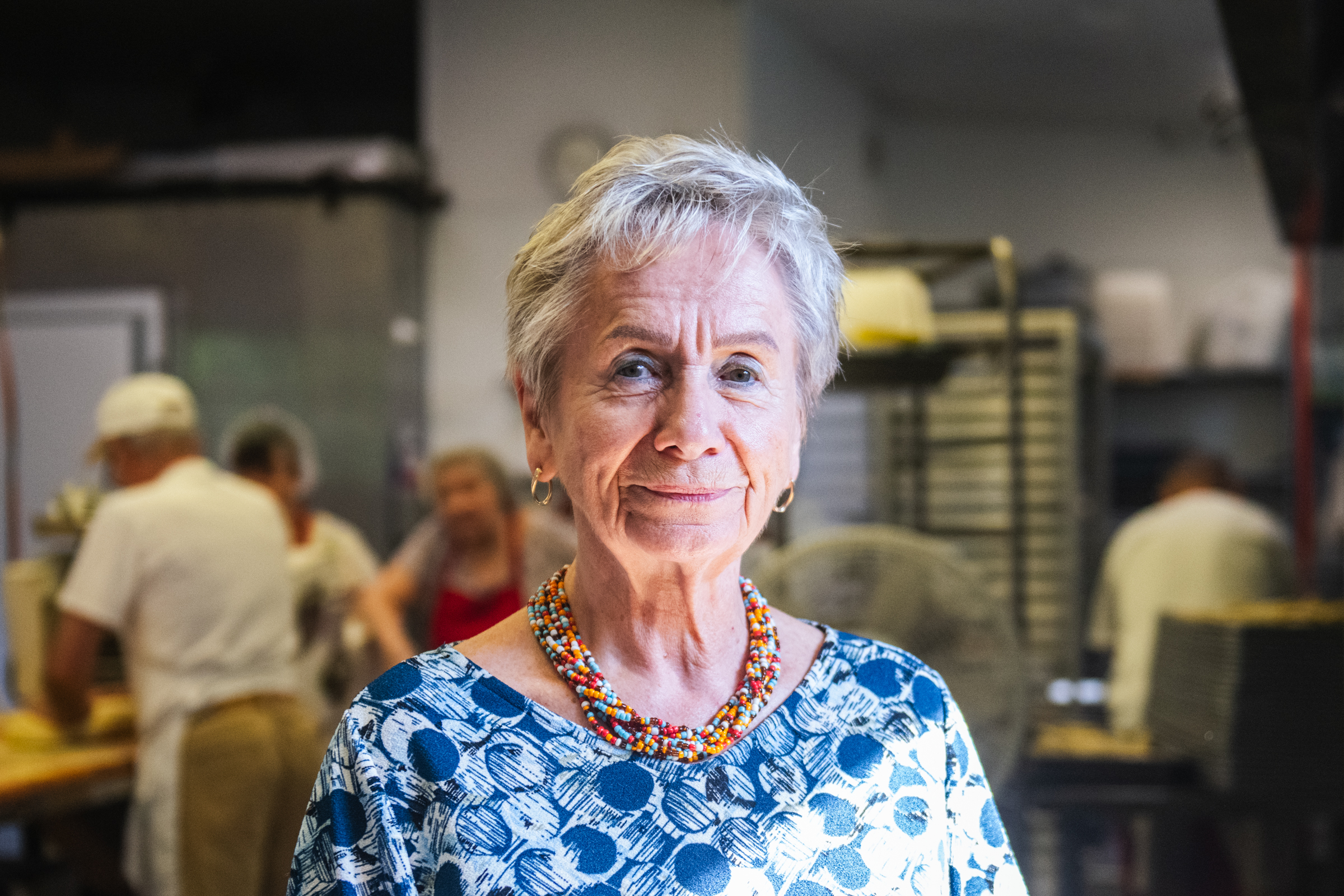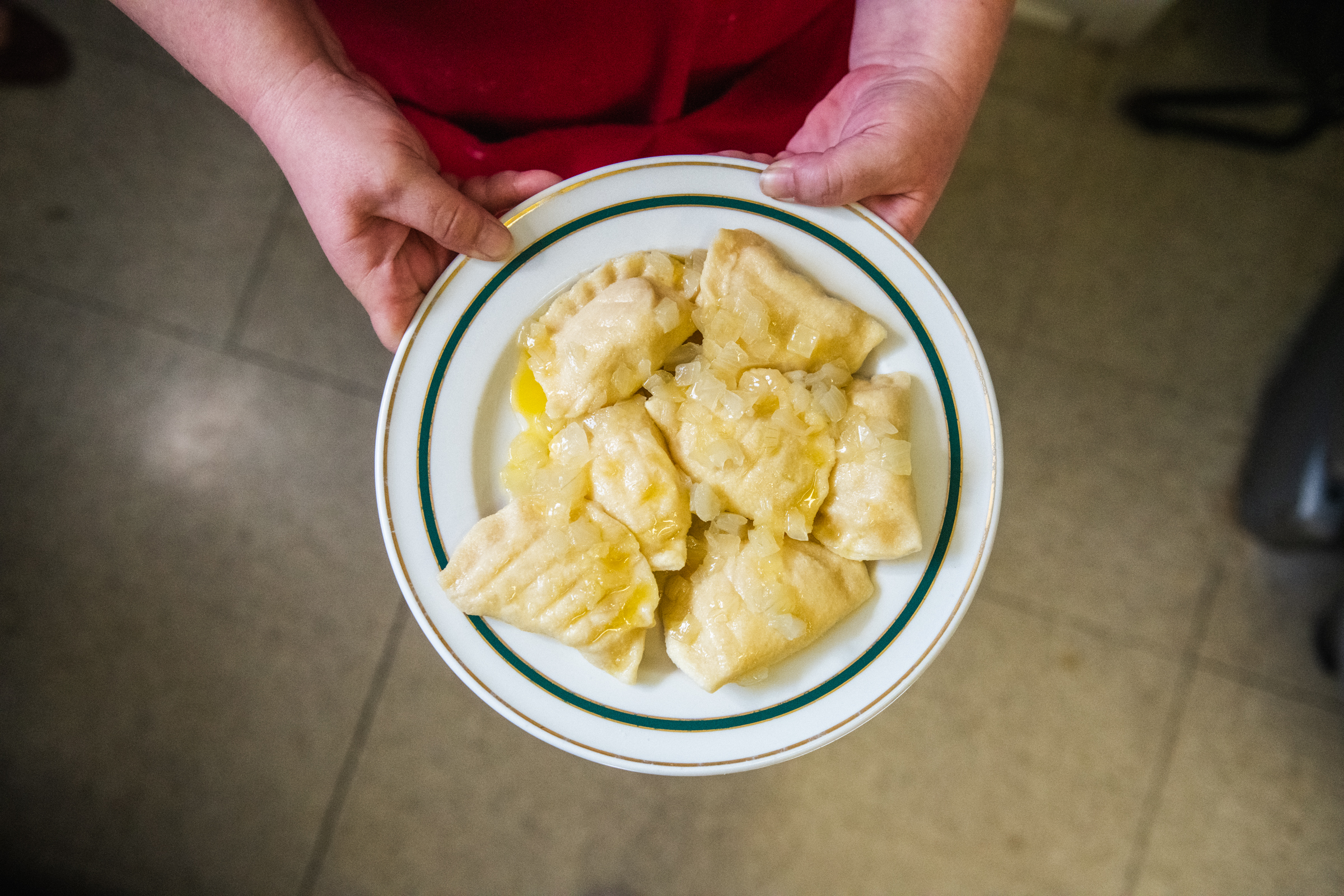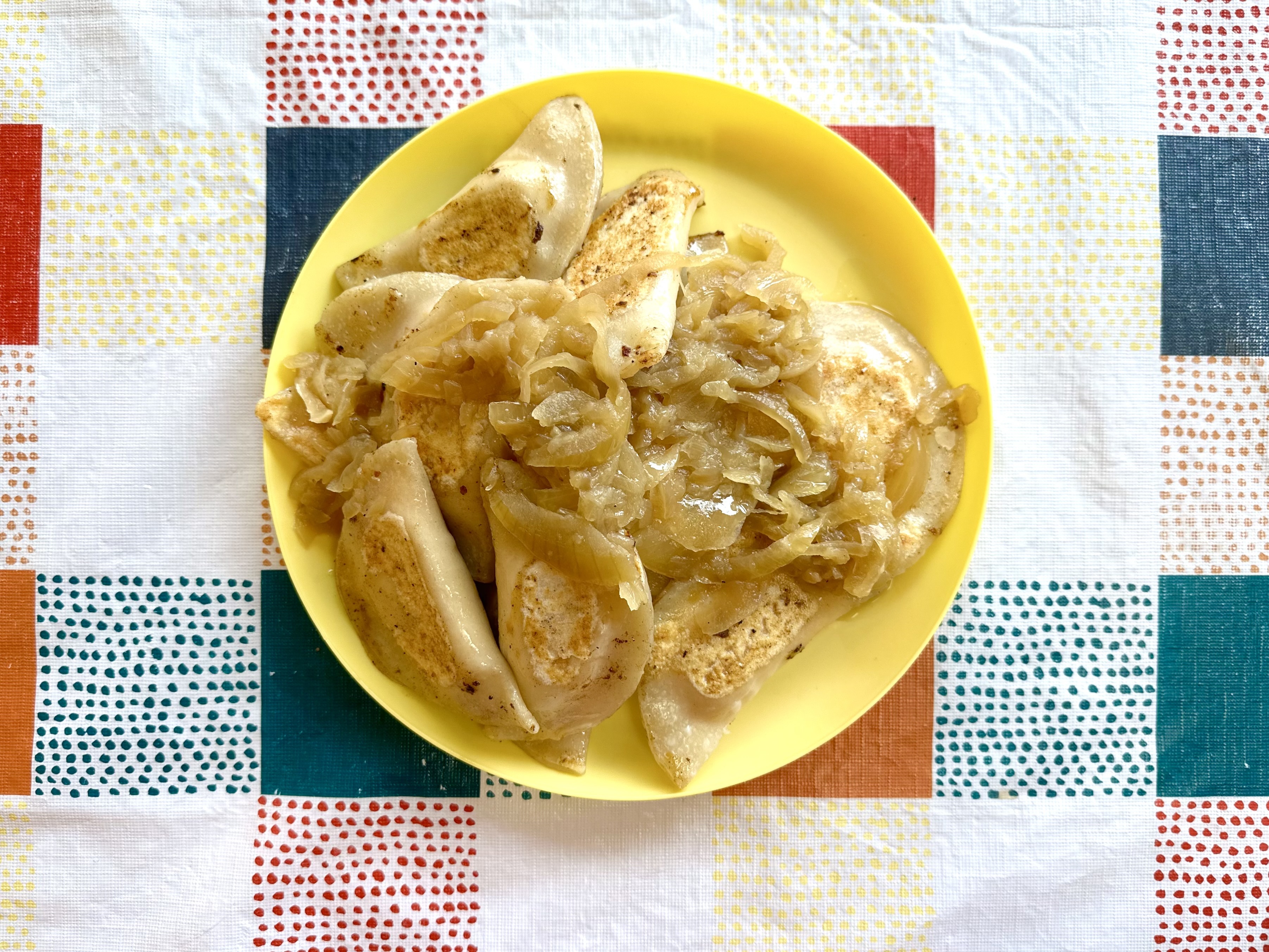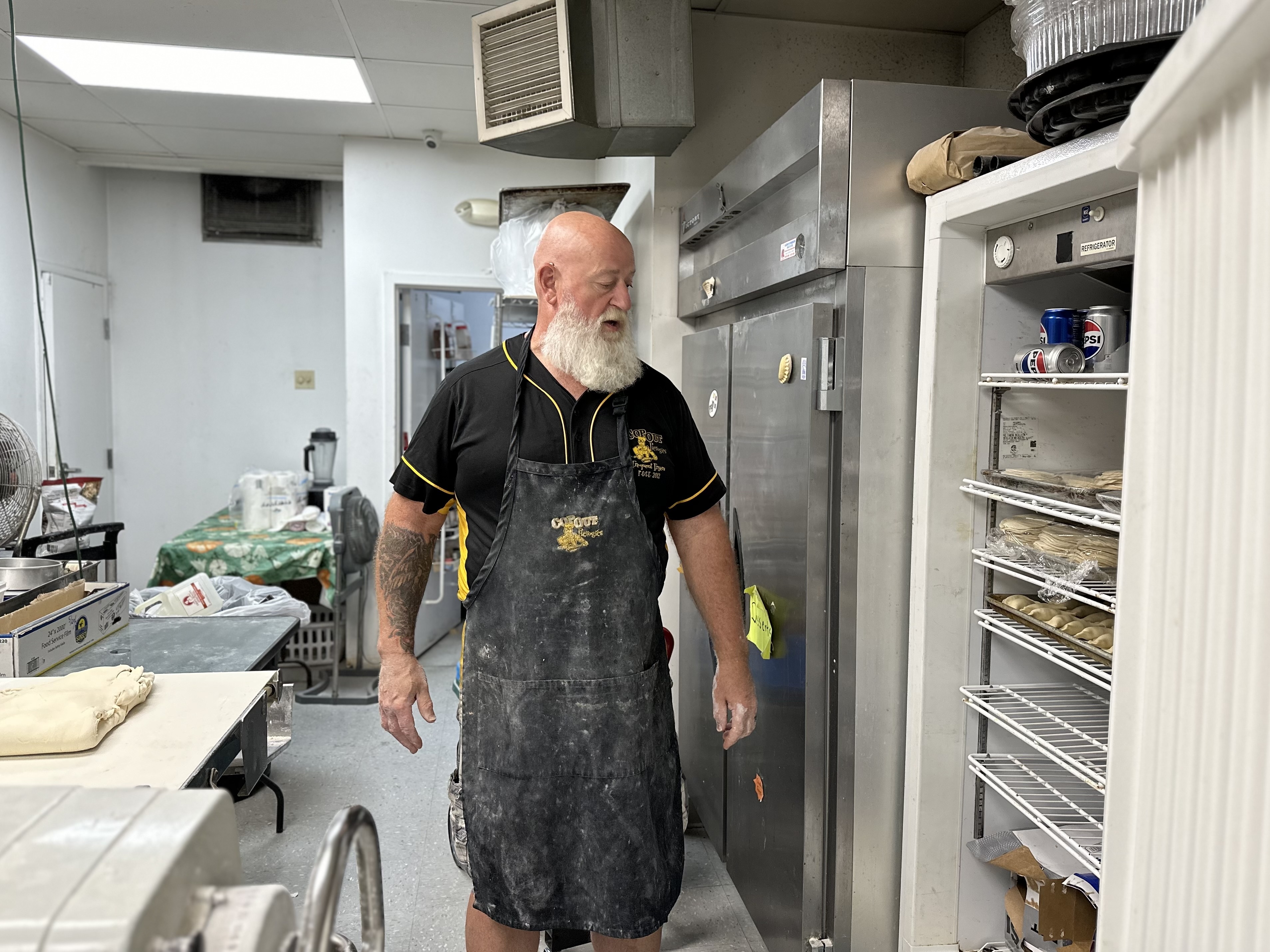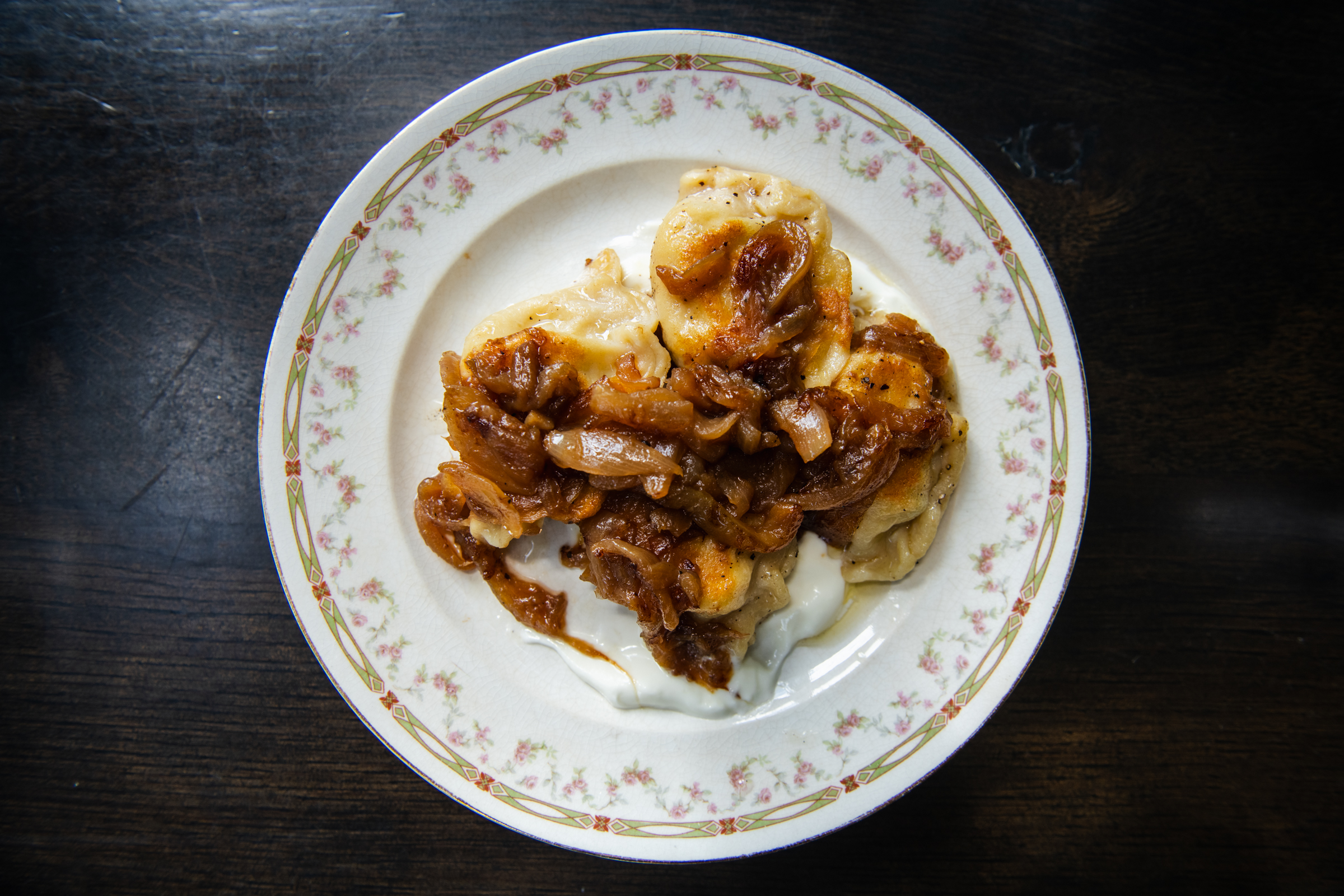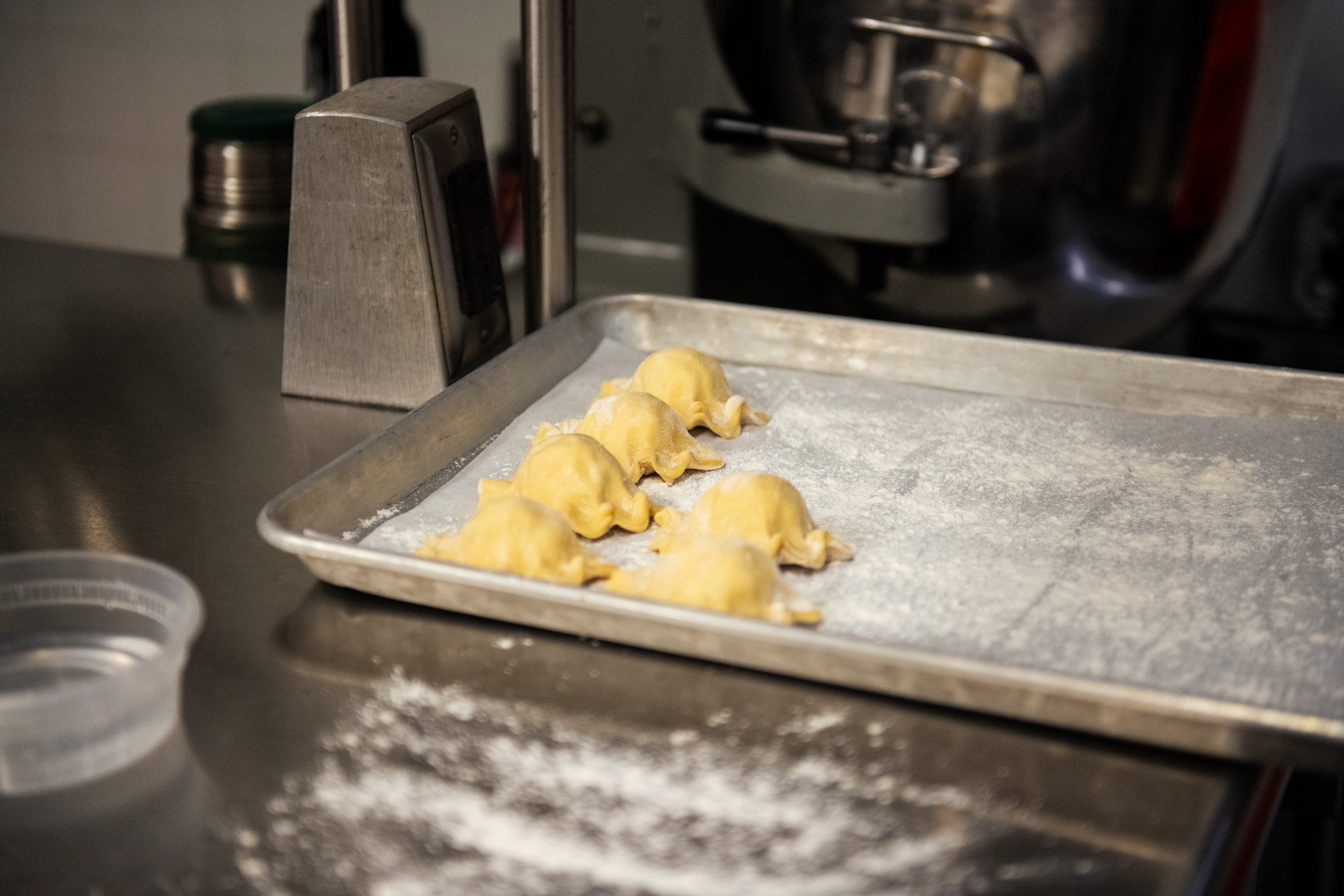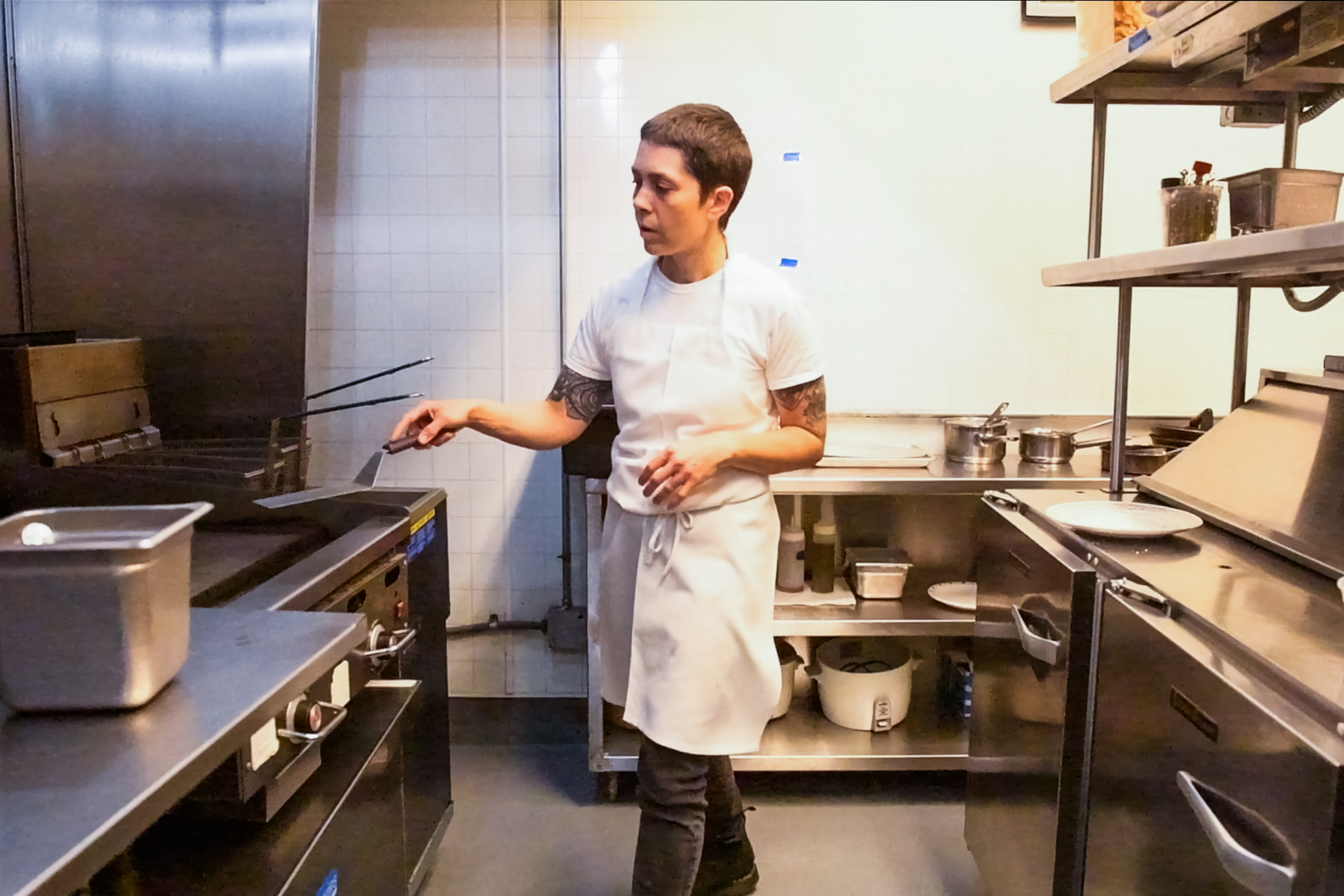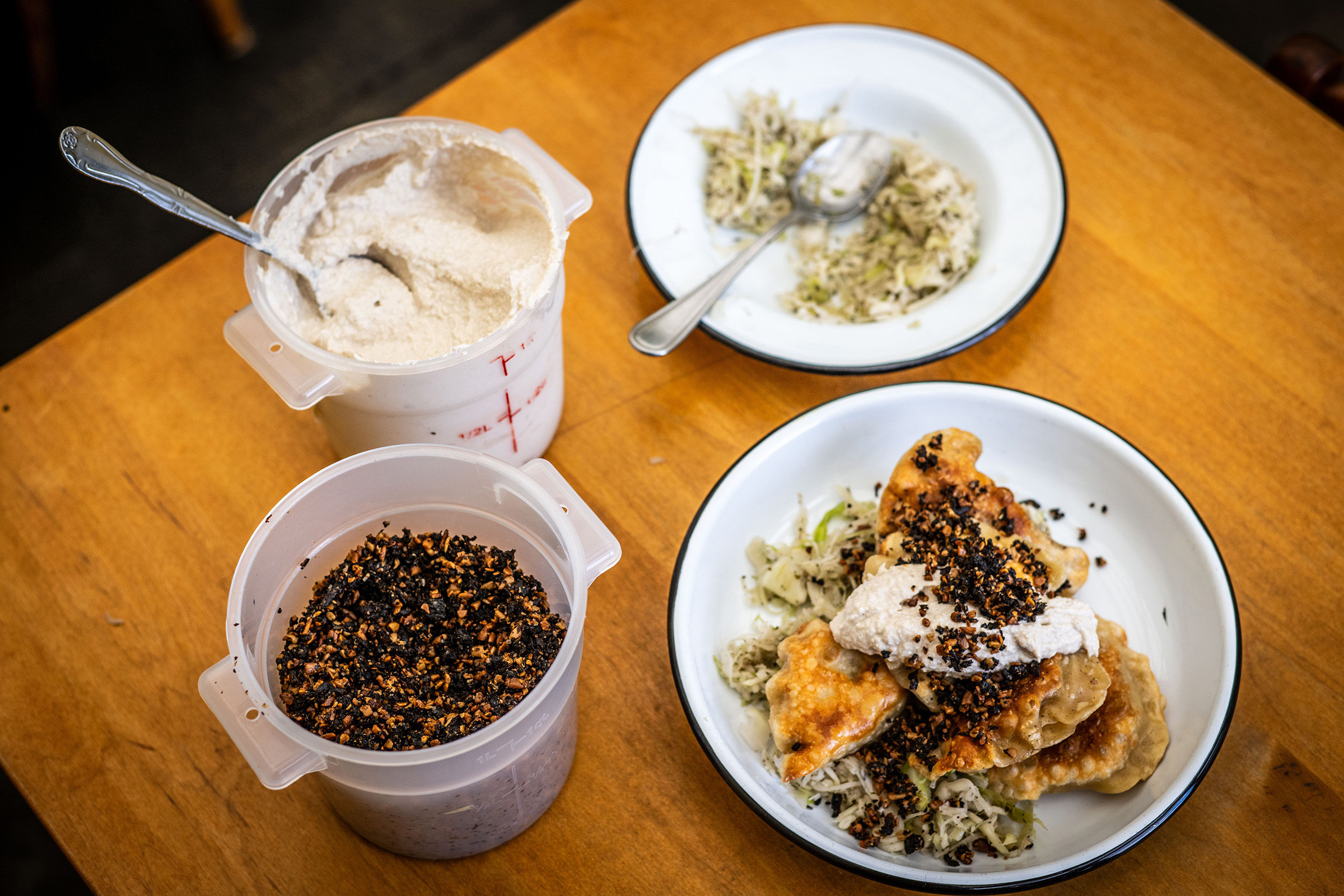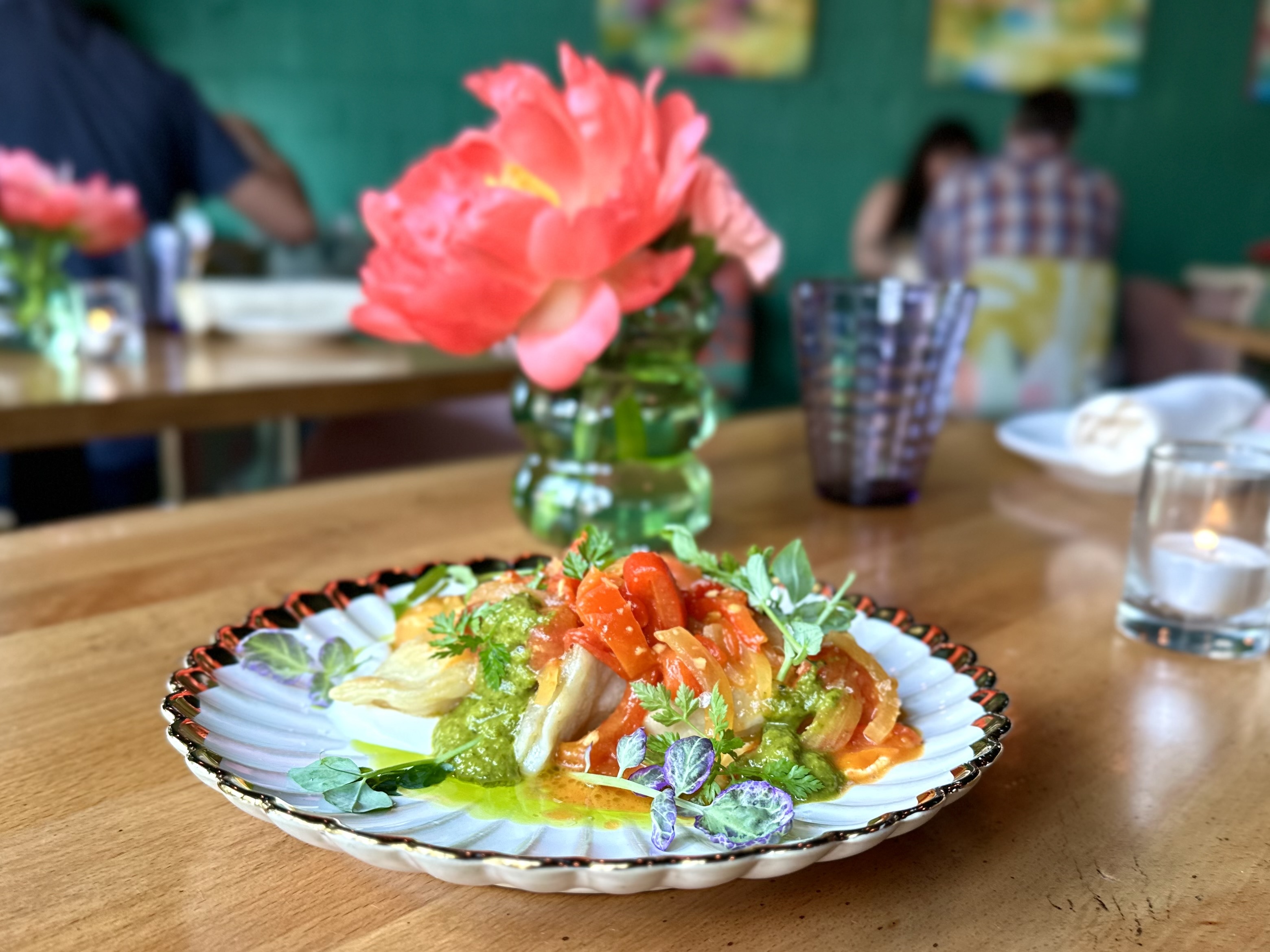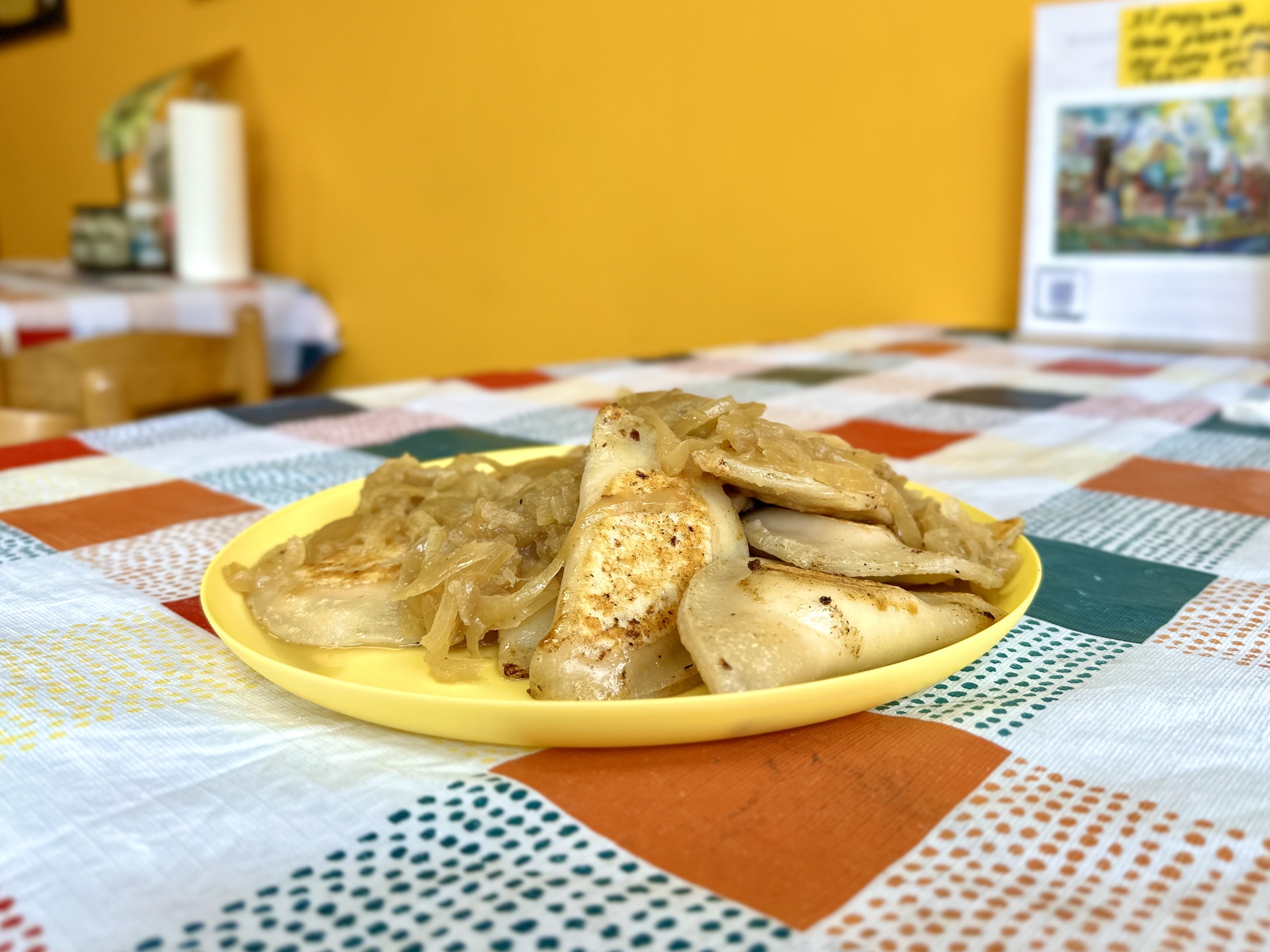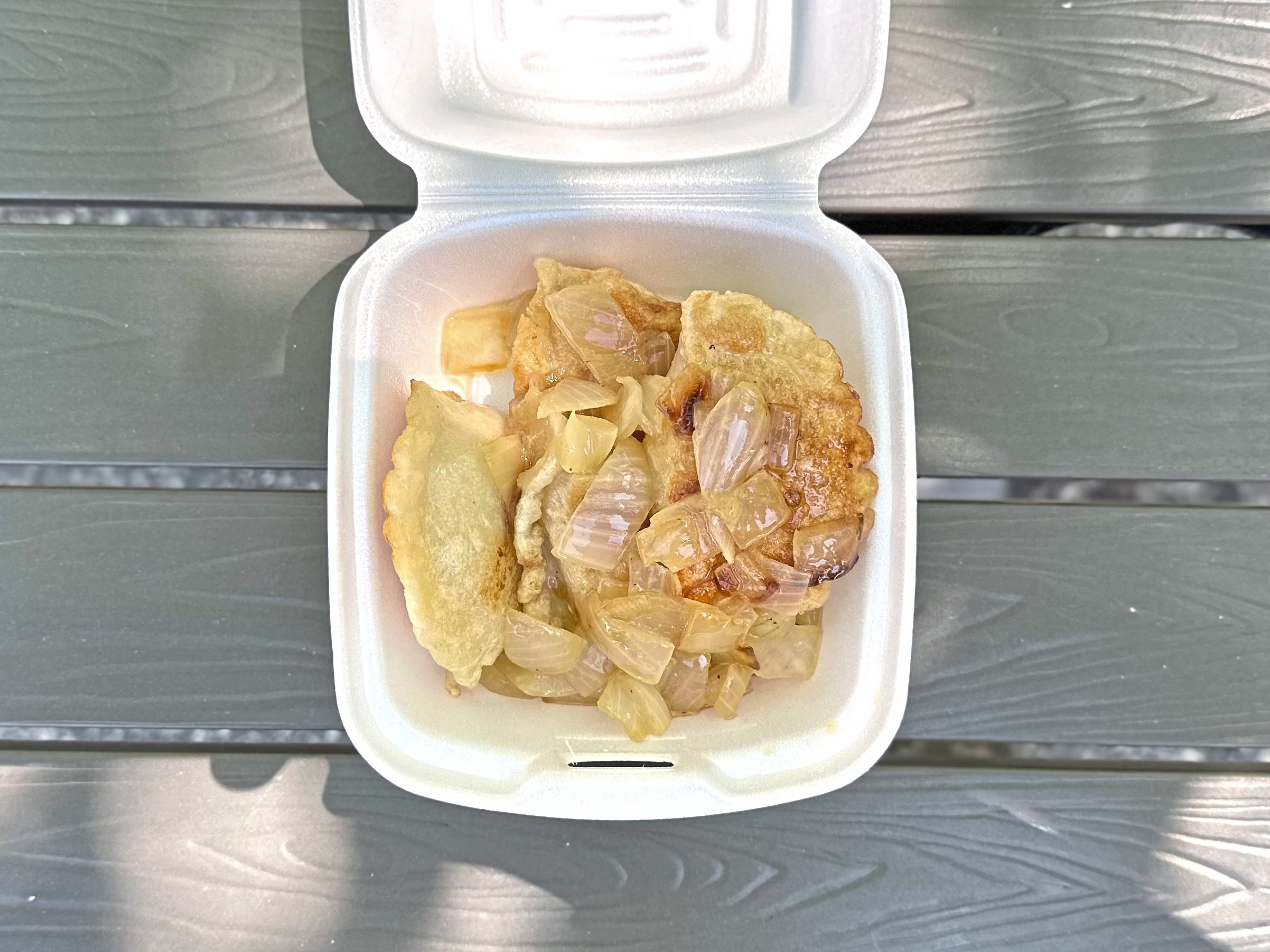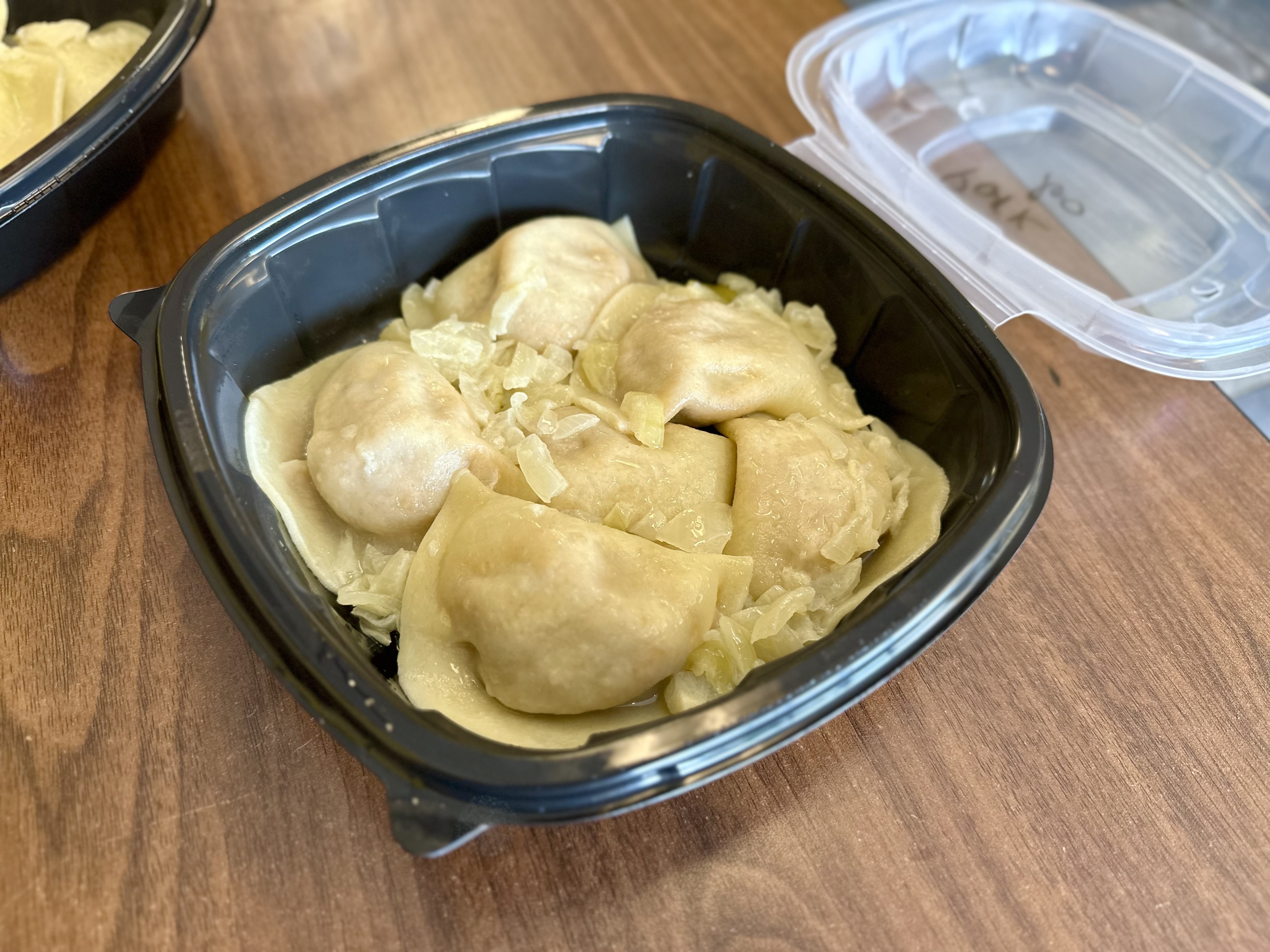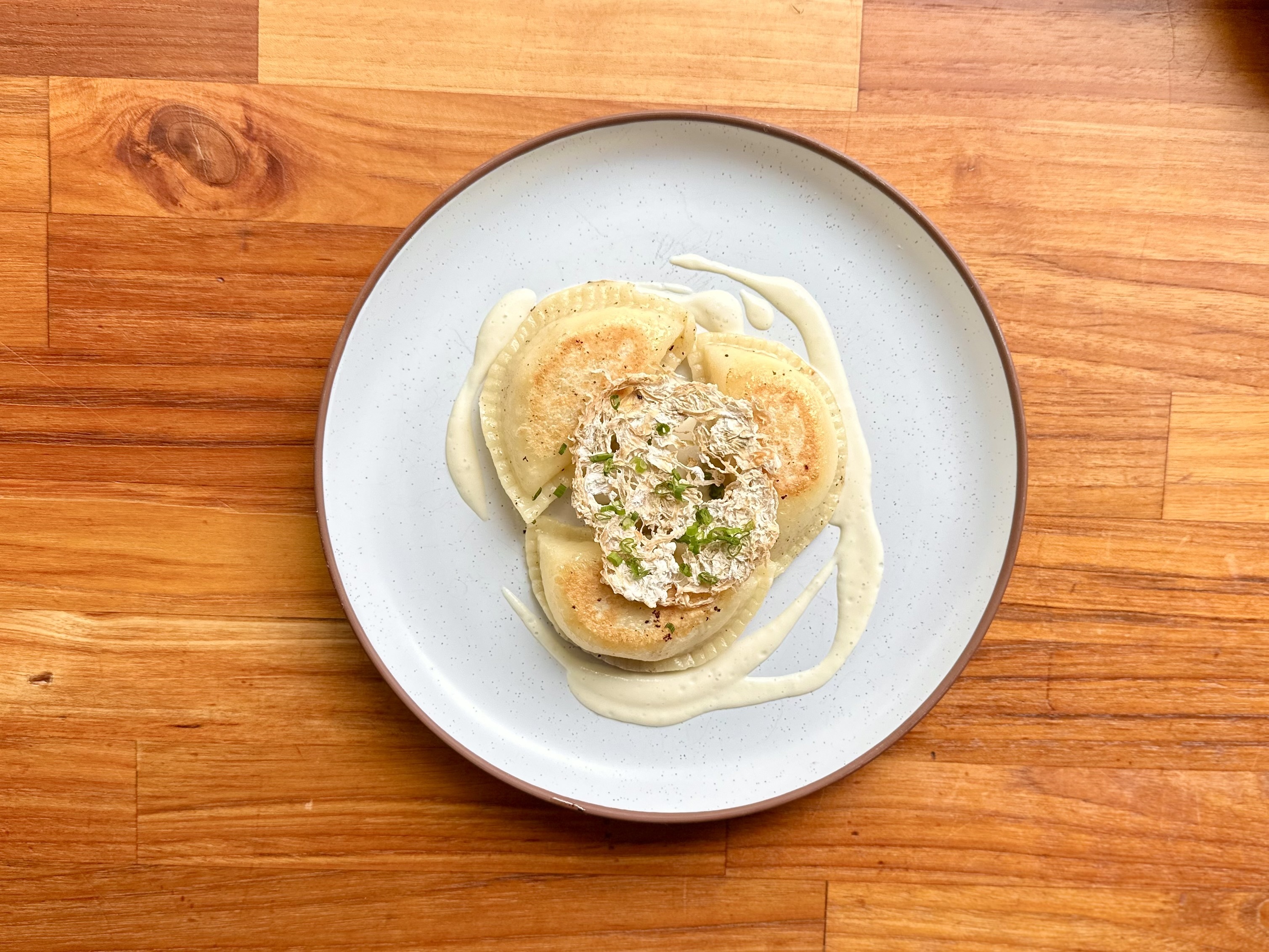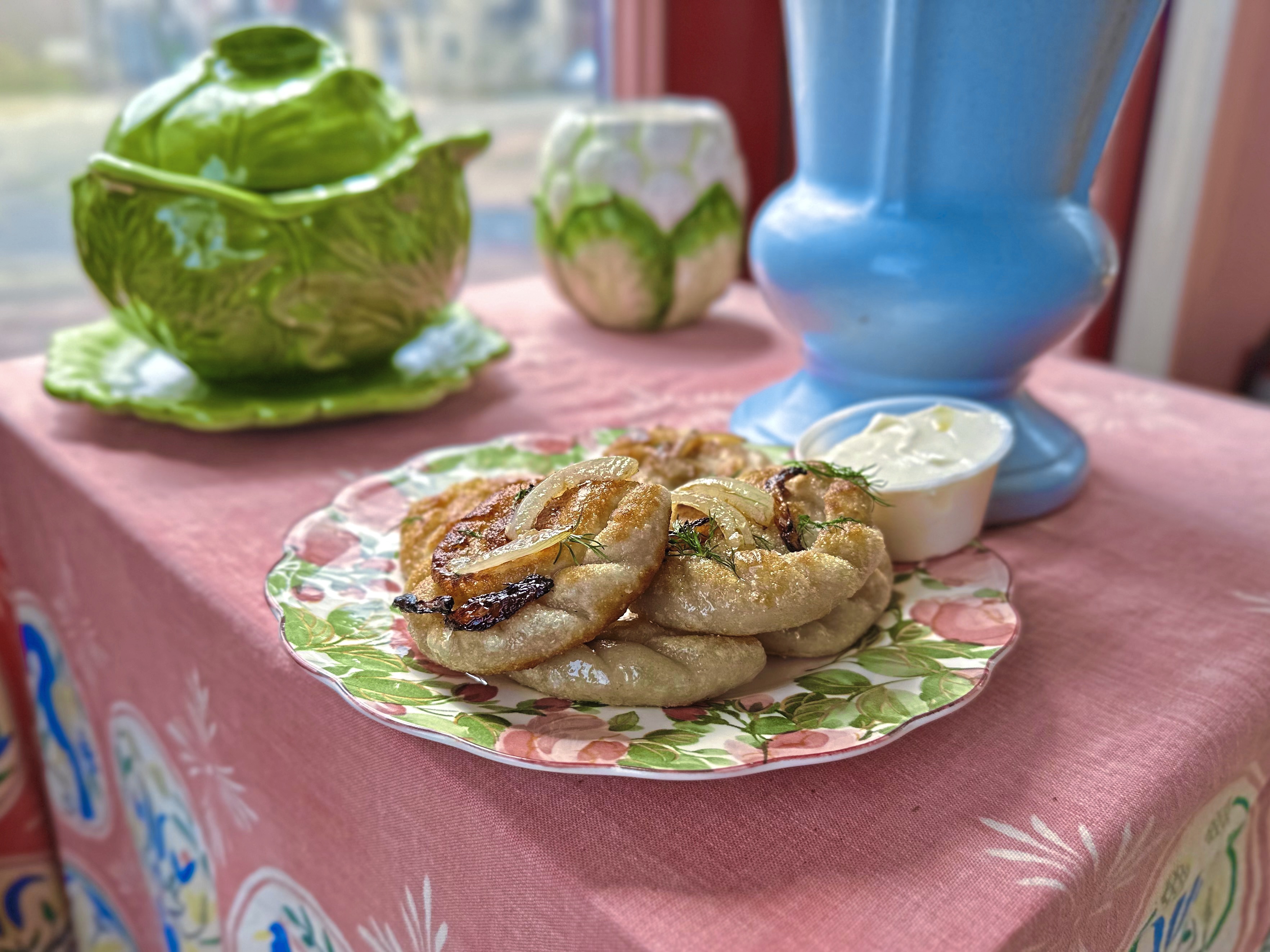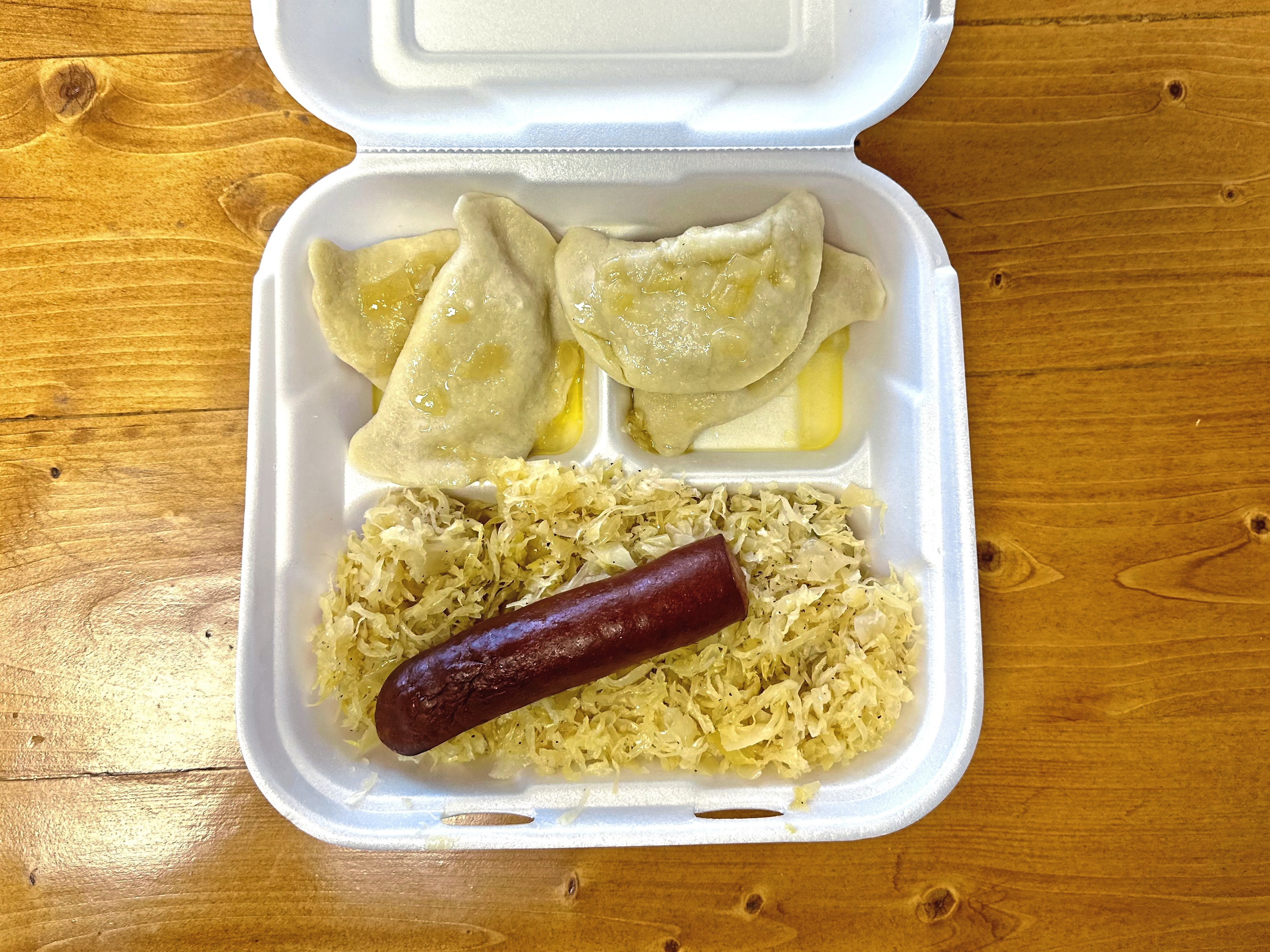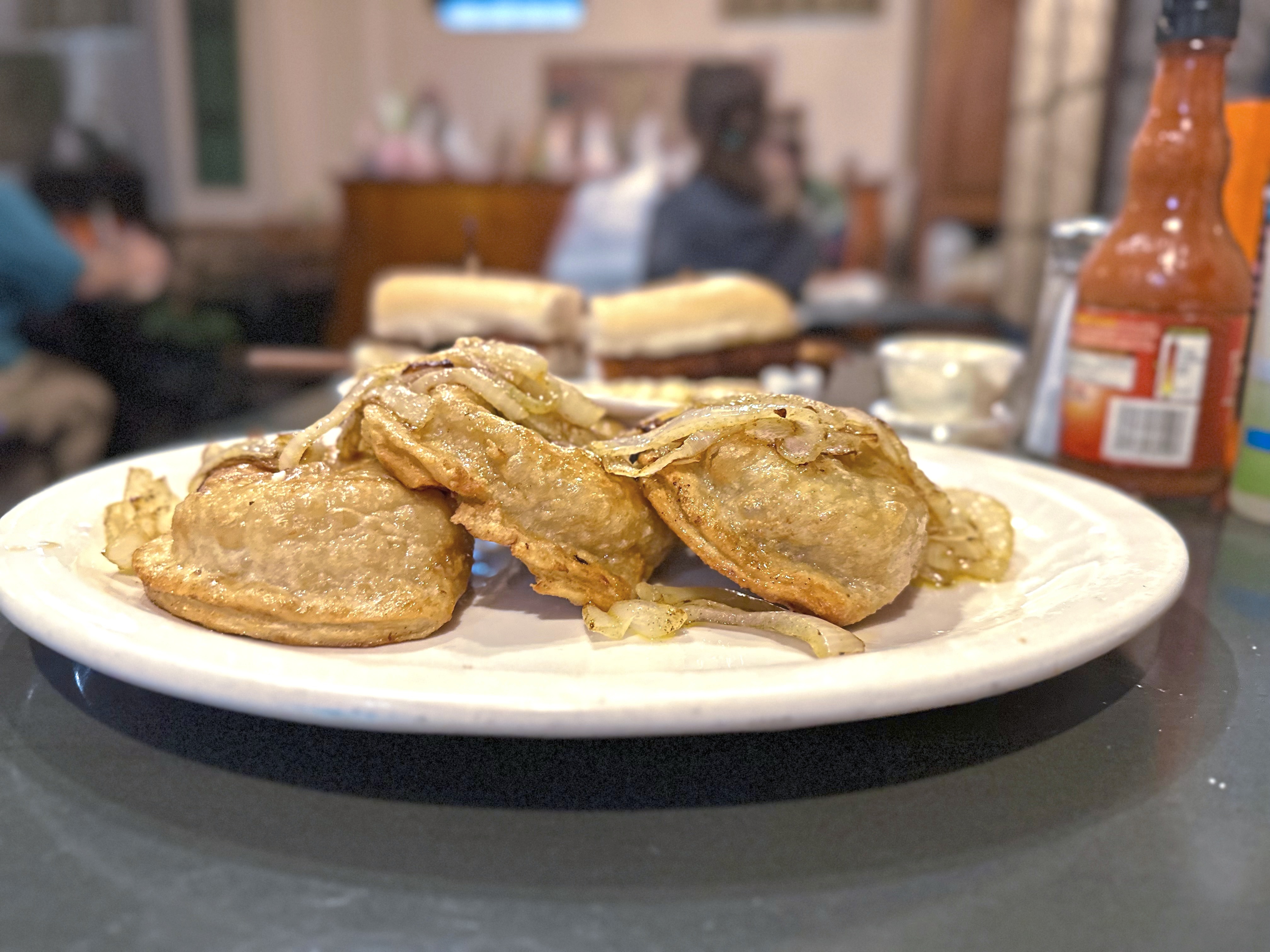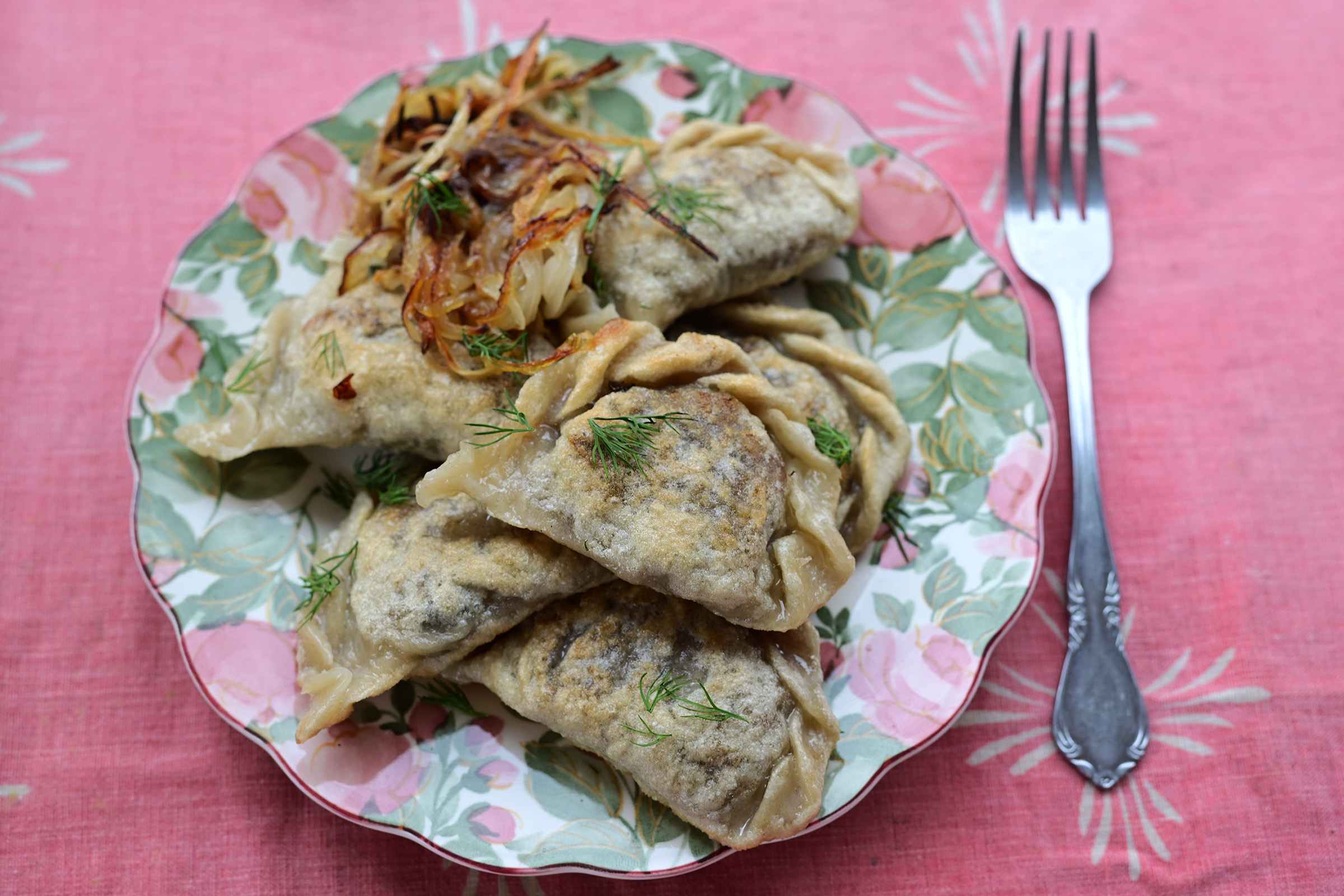How to make the perfect pierogi at home
By Gretchen McKay
June 20, 2024
Olive Visco has always loved to cook the old-school Polish foods she grew upon, sometimes even for friends in her adopted city of Pittsburgh.
But until the COVID-19 pandemic stymied her career as a bar manager, the Venango County native never dreamed she’d make an actual living from rolling, folding and pinching her maternal grandmother Statia’s recipe for pierogi and selling them via social media under the handle @polsaklaskapgh.
Upon earning a degree at Chatham University in 2016, “I wanted to make food videos or maybe be a PR person for a restaurant,” she says.
After falling in love with the city’s burgeoning food scene, she instead ended up working both front and back of house jobs at Downtown’s now-closed Union Standard.
Visco had just lost her next job as bar manager at Iron Born Pizza in the summer of 2020 when she started selling her homemade pierogi on Instagram. Unemployment checks were slow to arrive, “and I needed to make money” to cover rent for the Bloomfield apartment she shared with her pugs, Oyster and Mussels.
“So I thought, ‘What am I really good at?’”
While most of the restaurant jobs she’d taken since age 15 involved waitressing or bussing tables, she’d also worked on the line at Iron Born before taking over its bar program in 2019. So while she’d never cooked for a living per se, she wasn’t a complete novice either.
In fact, growing up on a 100-acre llama farm in Franklin with “pretty hippie parents” — her father, Kip, is a third-generation family physician and her mom, Victoria, was head of PR for a hospital — Visco was in the kitchen at a very early age learning to make the foods of her Polish heritage.
Traditional dishes like golubki, mizeria and the cold beet salad known as surówka z buraków were always on the table for special occasions and family holidays. By age 6 or 7, Visco was also mastering the art of pierogi making at the side of her Polish “bachi,” despite the beloved matriarch’s inability to speak due to early onset dementia.
And not just any pierogi, but plump, hand-pinched dumplings with beautifully braided edges and umami-packed fillings like kapusta, a Polish cabbage dish that marries sauerkraut with onions, mushrooms and a pinch of sugar with the hot sizzle of white wine.
Fueled by muscle memory built up over time, “She made pierogi until the year before she died,” Visco remembers of her grandmother with a wistful smile.
That her own dumplings would prove just as mouthwatering to pierogi fans when she offered them for sale by the dozen was nothing short of amazing. “I’m not from Pittsburgh, so I didn’t understand the novelty of it,” she says with a laugh.
The 30-year-old mother-to-be soon learned that people in the ‘Burgh don’t just like pierogi; they love them. “So I thought, ‘This is the city for it.”
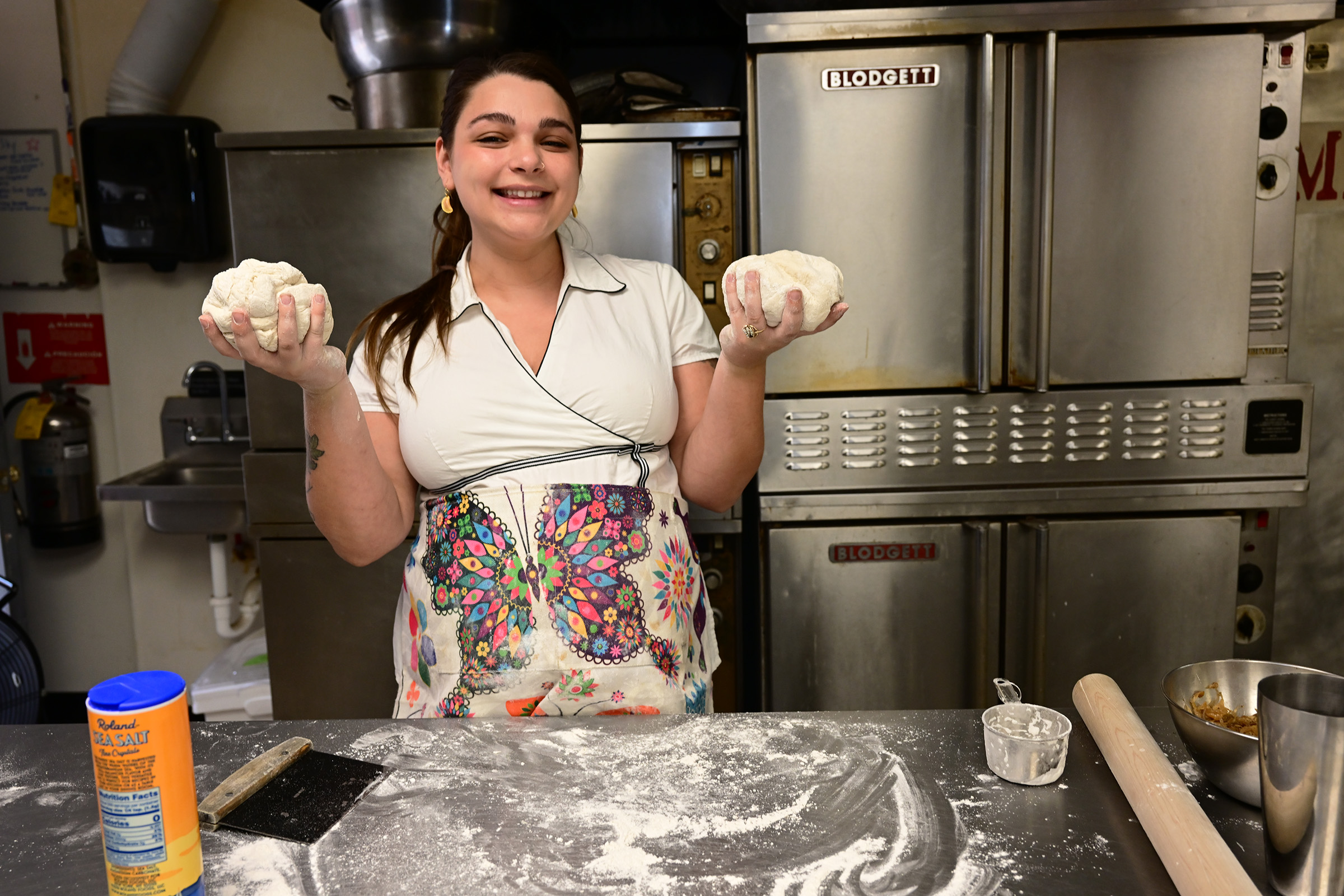
Olive Visco from Polska Laska. (Lucy Schaly/Post-Gazette)
Her many connections in the hospitality industry and on social media made selling the dumplings she hand filled and folded in her tiny kitchen easy. Soon, friends and friends of friends were ordering them to the tune of 500 a week on Instagram and Facebook.
“People were lining up outside my apartment on Penn Avenue,” she recalls with a grin. “It was a lot of hard work,” but within a year, she was really catching on as the Pierogi Girl of Bloomfield.
She named her growing takeout business Polska Laska, slang for “Polish Chick.”
“I wanted something fun, and a little slaying,” she explains. “It’s a little sassy, a little flirty, a little naughty” — kind of like the girl herself, who at almost 9 months pregnant, couldn’t stop laughing and joking as she rolled out some dough for a demo on a recent Monday — wearing a pair of dangling pierogi earrings.
Eventually, Visco’s sales outgrew her home kitchen and she moved operations — first to a catering kitchen in Etna and then to Gooski’s in Polish Hill, which is owned by her husband Sky’s family.
Last fall, she took a giant leap of faith and set up shop in a corner storefront on North Canal Street in Sharpsburg that formerly housed Mindy’s Take & Bake. She wasn’t looking to move, she says, but couldn’t pass up what seemed like a perfect opportunity when a customer told her it was available.
Today, the spacious commercial kitchen filled with professional equipment allows her and former Mindy’s employee Shaina Satterfield to crank out around 1,500 pierogi a week in an amazing variety of flavors.
Church lady pierogi these are not. While potato cheddar, farmers cheese and kapusta are, and will always be, perennial favorites, Visco is not afraid to experiment with what some might consider crazy fillings.
The hundred-plus varieties she’s dished up over the years include everything from bacon cheeseburger, Philly cheesesteak and meatloaf to Buffalo chicken, blueberry cheesecake and “Weak Night” (made with Maruchan ramen, cream cheese, egg, Parmesan and scallion). In early June, “cowboy” pierogi filled with chorizo, corn, black beans and scallions were available as a special.
“I try to create as much flavor as I can,” she says.
She also occasionally wraps the dough around seafood just to be fun, even though she knows it’s a hard sell. A lemony, herb-kissed clams casino was probably her weirdest pierogi, she says. “But it wasn’t a crazy amount.”
Also a little different: She uses the vegan dough she grew up on instead of one enriched with dairy.
“Eggs and sour cream were expensive, and a luxury for my grandparents,” she explains. “So our dough has always been just flour, water and salt.”
The resultant pierogi are thinner and crispier than traditional church lady dumplings and easier to make vegan across the board.
Many are crafted using local ingredients that are in season — this spring she made them with ramps, and she’s currently contemplating pairing mulberries with farmers cheese — and they are sold both fresh and ready to cook as well as frozen. (They keep for about three months in the freezer.) They cost $12 for 6 and $20 for a dozen.
Due to give birth to her first child in July, Visco plans on taking a short sabbatical over the summer to prepare for turning the takeout business into a small sit-down cafe. While the grand opening date is still in flux, she expects to open it sometime in the fall with seating for around 25 customers.
Along with pierogi — which you can also find at Kelly’s Bar and Lounge in East Liberty and on weekends at pop-ups — customers will be able to enjoy everything else she currently offers for takeout, including sauerkraut pancakes, Polska platters, stuffed cabbage and haluska. Most sides are $5.
She’ll also return to doing pop-ups and teaching classes, as well as the occasional catering job.
“Cooking was always just a hobby,” she says. “I never dreamed that one day I would own a business where I’d be able to cook as well.”
While at times Visco feels overwhelmed as a small business owner, she hopes that every year she’ll be able to step up with something bigger, better and more creative.
“I love feeding my community,” she says. “For me, it’s not about getting rich but creating a space to cook some really good food that makes people feel good about spending their money. I feel really lucky to be able to work hard and have something to show for it.”
The fact she’s passing down her Polish heritage to others by passing down her grandmother’s recipes?
“What I do is a privilege for sure,” she says. “To do something I love and make people happy and make connections.”
Can’t wait until she’s back in the kitchen or just curious to try making pierogi yourself? Because her super-simple dough is so consistent, Visco is confident anyone could learn to make her pierogi once they get a feel for it.
“It’s knowing the [proper] texture,” she says, which can take some time to perfect. “It’s not a hard know, but you know when you know.”
For beginners, she offers some tips:
• Add the flour slowly, one cup at a time, continually stirring as you go. She starts with a metal whisk, but switches to a folding action with a rubber spatula when the dough starts to stick. The goal is dough that comes together into a raggedy ball.
• When it’s time to knead the dough, don’t be afraid to use a surprising amount of dough. “When I teach classes, my students always ask, ‘More flour?’ And I promise you, more flour!” That includes dusting the dough itself in addition to the work surface.
• Figuring out when the dough is ready for rolling is all about touch. The ball should feel soft and supple, and quickly release when you poke your finger into it. Also: It doesn’t need to rest like pasta dough. You can use it immediately.
• While rolling, use your fingers to flatten out any dimples in the dough and flip it a few times so you roll on both sides. The finished product should be very thin without being translucent. “We don’t want the dough to take over the story,” she says, “by overpowering the filling.”
• Any 3- to 4-inch circular glass with a sharp edge can be used to cut the dough into circles, and you can also find any number of pierogi cutters online. Her preferred tool is the same stainless steel Koriko cocktail shaker she used while bartending.
• To release the dough circles without tearing them, give the glass a push and a little wiggle. They should be slightly sticky so they seal properly when crimped, but still come out in “gorgeous little Polish moons.”
• Visco is pretty generous with the filling — she uses a 2-ounce ice cream scoop — but “I don’t want my pierogi to be skimpy,” she says, “and I don’t want a big dough ball.”
• Be sure to drain them on a wire rack after boiling in salted water. (They’re done when they float to the top). And for a crispier meal, fry them in oil on both sides over medium-high heat instead of butter, which can easily burn. “But butter with your onions is always a good thing to do,” she says.
Gretchen McKay: gmckay@post-gazette.com.
Recipe: Kapusta Pierogi
PG tested
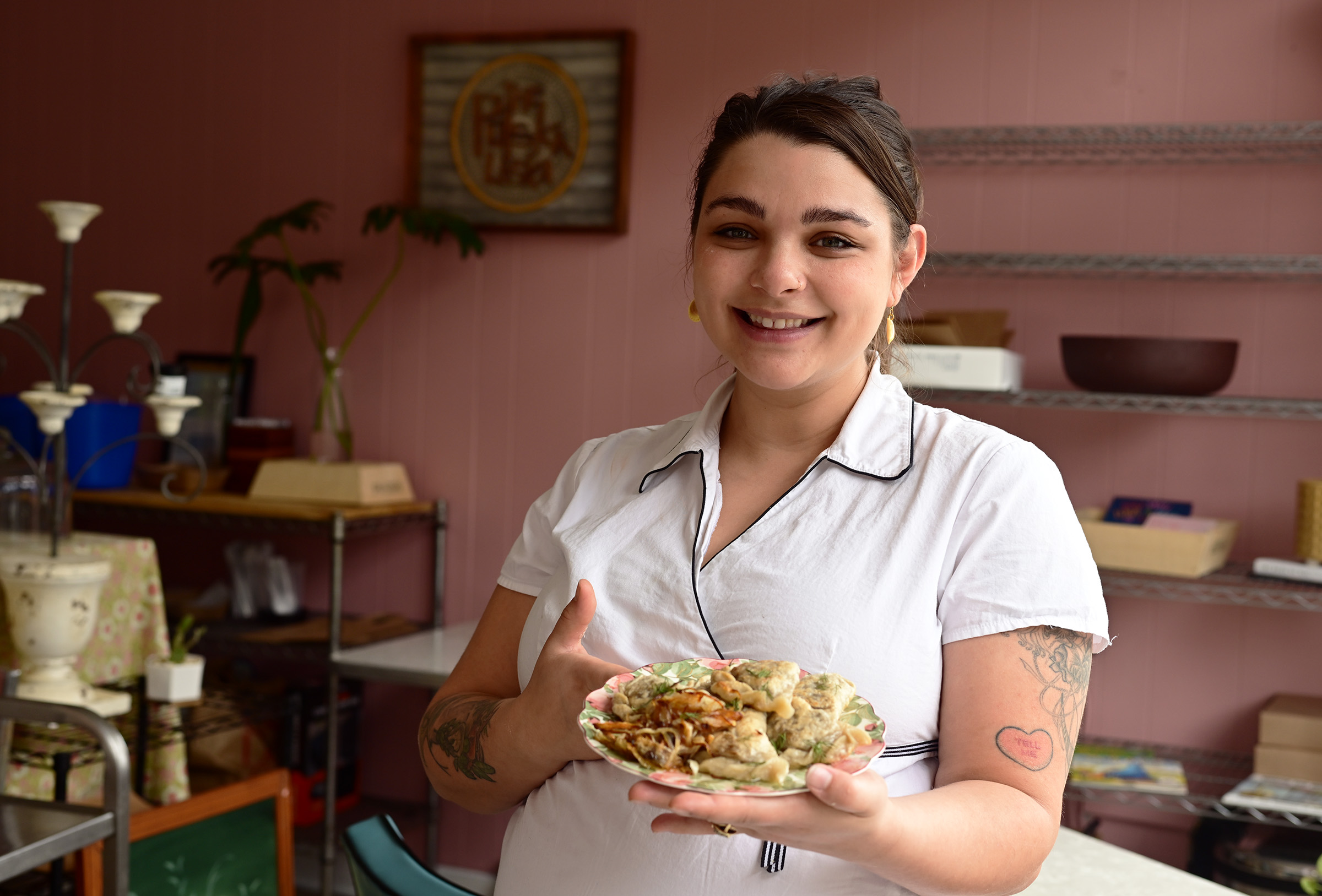
Olive Visco, owner of Polska Laska, holds her signature pierogi in her Sharpsburg restaurant. (All photos and video for recipe: Lucy Schaly/Post-Gazette)
Kapusta is a traditional Polish cabbage dish made with onions, mushrooms and sauerkraut. Full of umami, it’s often served with broth as a soup, but at Polska Laska in Sharpsburg, Olive Visco uses it as a savory filling for her handcrafted vegan pierogi.
Aldi’s jarred sauerkraut is her preferred brand not only because it’s the cheapest, but also delicious, “and I transform it anyway.”
She likes to use white wine to deglaze the mixture as it cooks in a pan but, depending on your taste, “a nice Polish lager would be delicious, too!” she says. Water is also fine.
When making the dumplings, remember that flour is your friend! “The key is to keep your dough and surface sprinkled with flour at all times to prevent dough sticking to the table,” she says.
You can reroll dough scraps, but only once. After that, it’s too tough and dense.
For kapusta filling
1 24-ounce jar sauerkraut
1 medium white onion, chopped
Handful of chopped mushrooms
1 bay leaf
Salt and pepper
2 teaspoons sugar
Water, white wine or beer, for deglazing
For dough
2 cups water
Salt
6 cups of all-purpose flour
For serving
Caramelized onion, sour cream and chopped fresh dill
The Pittsburgh Post-Gazette's Test Kitchen hits the road and heads to Polska Laska in Sharpburg to learn how they make their well-known pierogi. (Video and photos: Lucy Schaly/Post-Gazette)
Make filling. Add sauerkraut, onion, mushrooms, bay leaf and sugar to a wide pan or pot. Stir to combine, then season to taste with salt and pepper.
Cook over medium heat until mixture is cooked down and slightly brown on the bottom of the pan.
Add a splash or two of wine, water or beer to deglaze pan. Repeat until mixture is braised down and all the ingredients are caramelized. Set aside while you make dough.
Prepare dough. Start by putting the 2 cups of water into a large mixing bowl and then salt the water like the ocean.
Add 1 cup of flour at a time and whisk it into the water. After about 2 cups of flour, you will notice the mixture will have a batter consistency and will become a little thicker and hard to use a whisk for.
Switch over to a rubber spatula and start adding flour 1 cup at a time and stirring, scraping the sides, and folding it into the mixture.
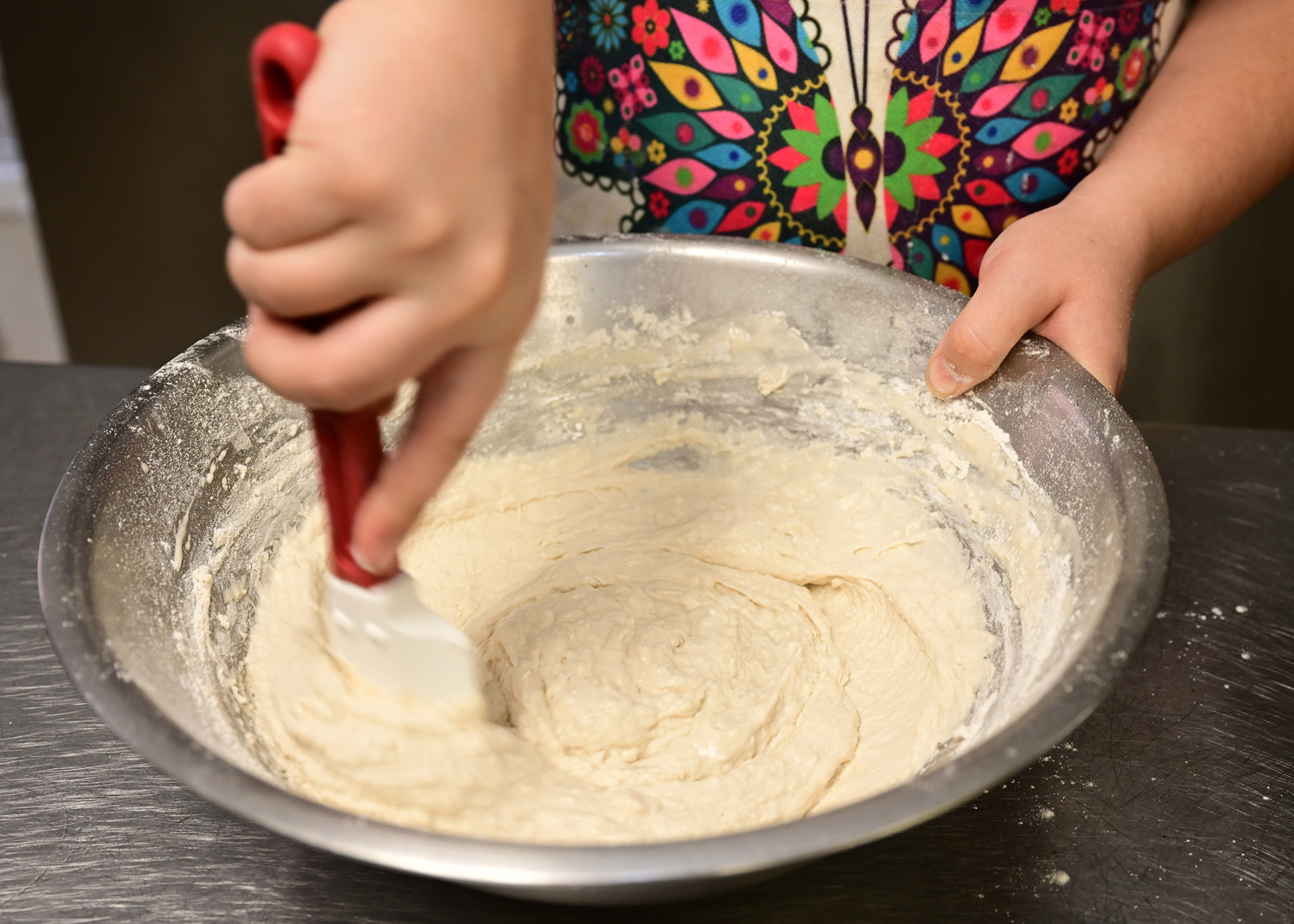
Once the dough is thick enough that it's becoming a shaggy-looking blob, you can flour your work surface and put your shaggy blob onto it. The key is to keep your dough and surface sprinkled with flour at all times to prevent dough sticking to the table.
Knead your dough out with heavy dusting of flour at a time and form a firm (not soft, but not sticky) ball of dough. You should be able to poke the dough and create a deep print where the dough does not stick to your finger.
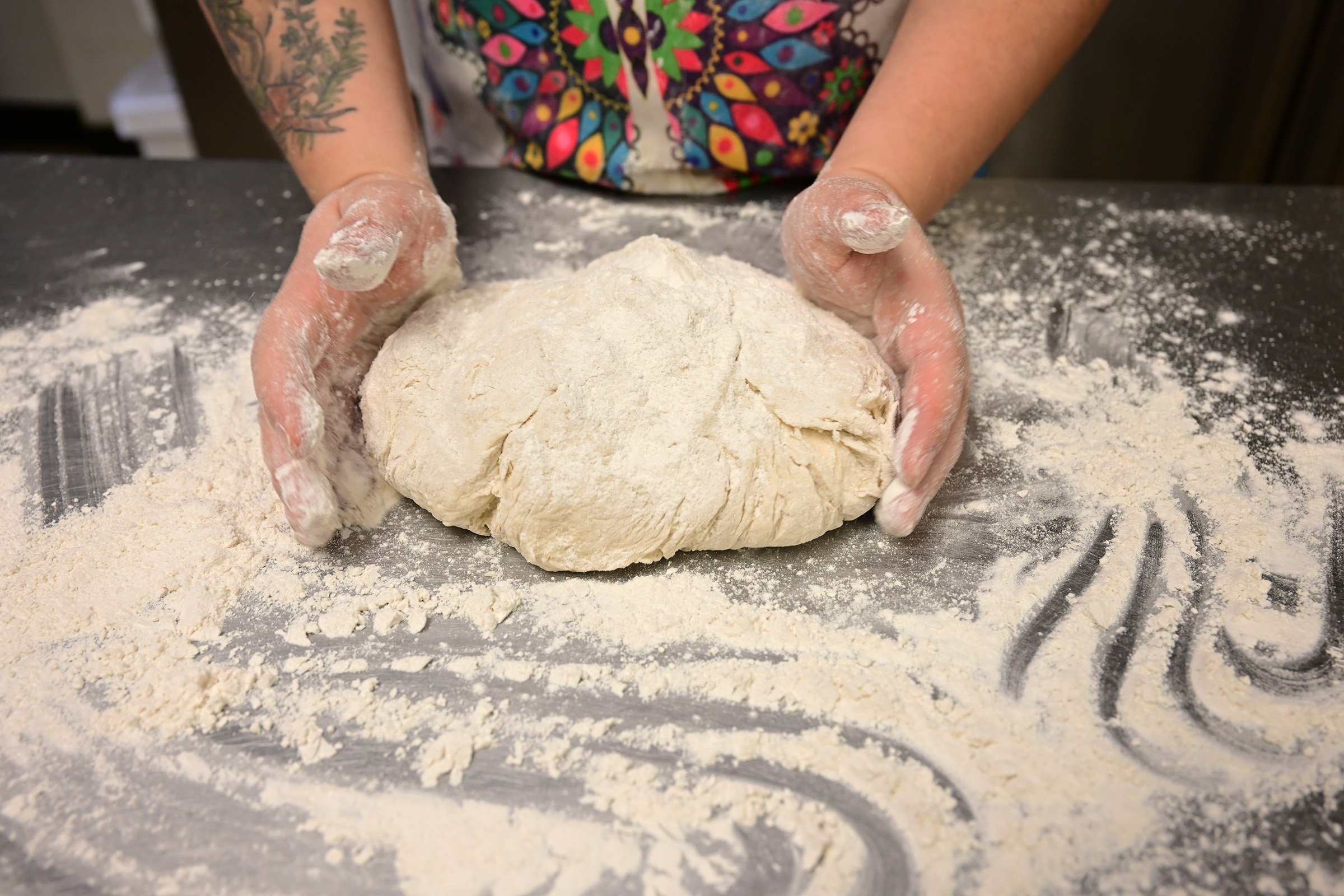
Now it's time to roll out your dough. Pat your ball of dough into a nice flat disk. Make sure it's dusted with flour. Dust your rolling pin, too. Roll out your dough in all directions but do not force a stretch of any kind.
Dust the rolled out dough with flour. Flip it. Dust it again. Roll it again. The dough should be very thin, but not translucent.
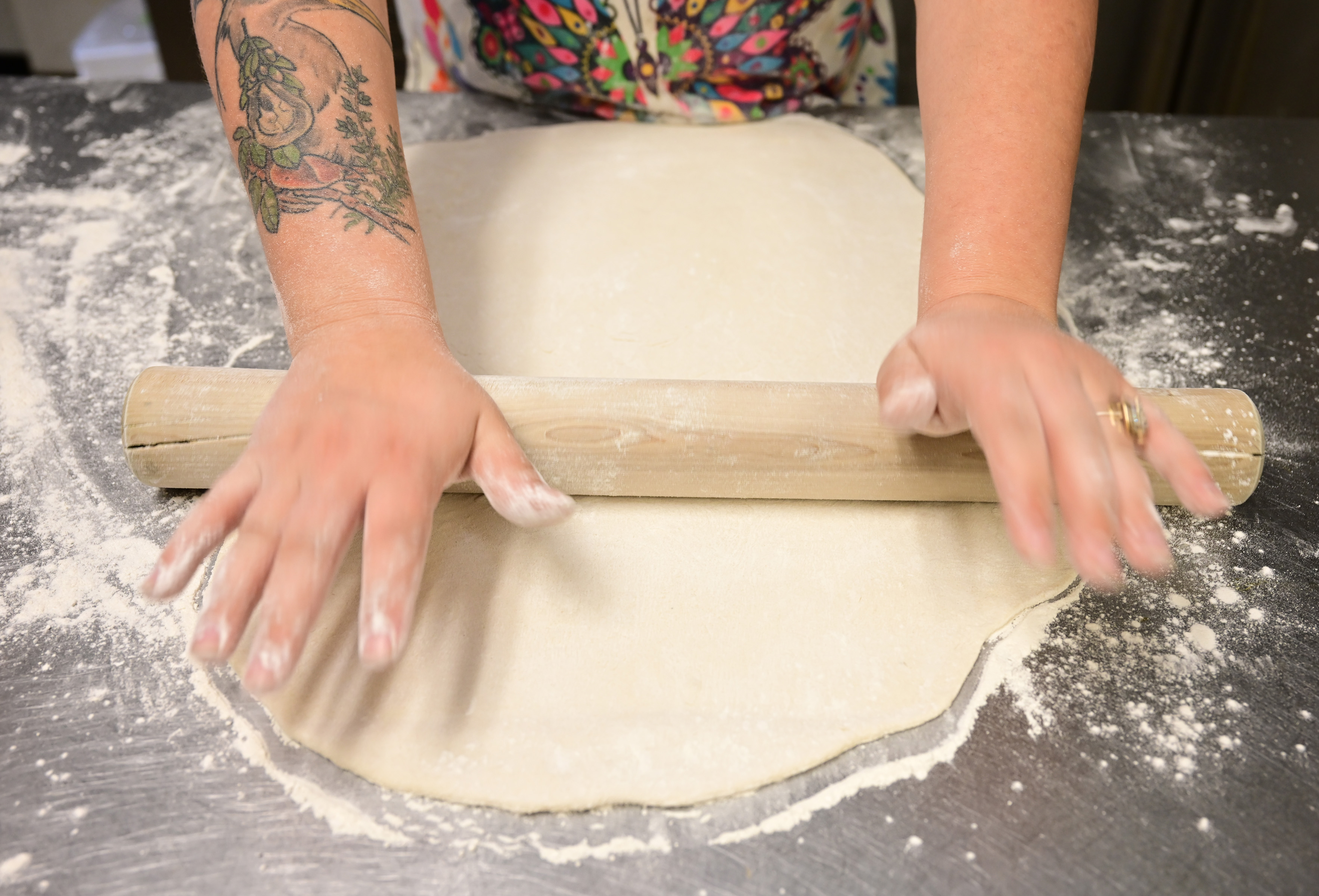
Cut circles into the dough using a thin-edged circular tool such as a water glass or cocktail shaker.
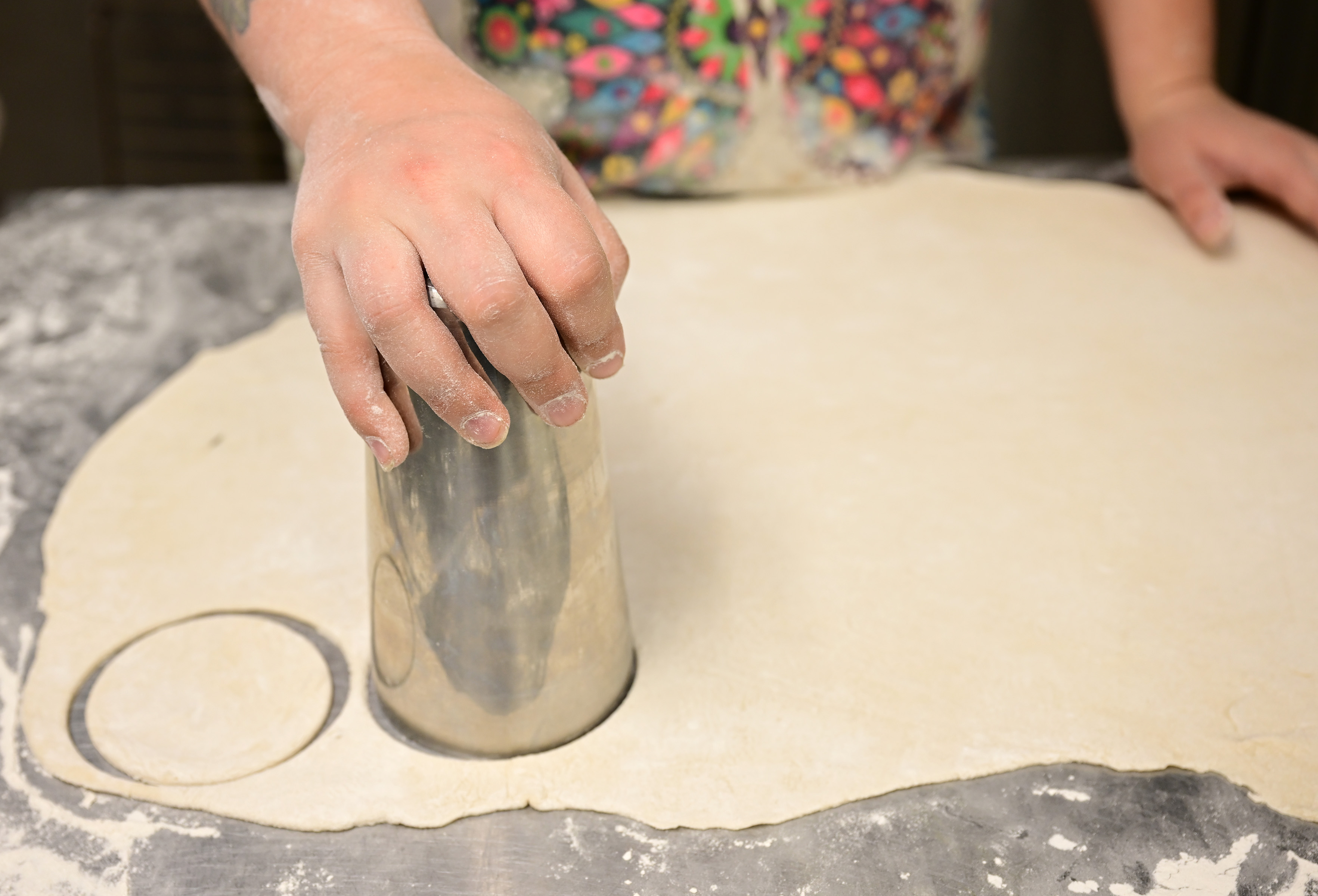
Place about 1½ ounces of your choice of filling into the center of the circle.
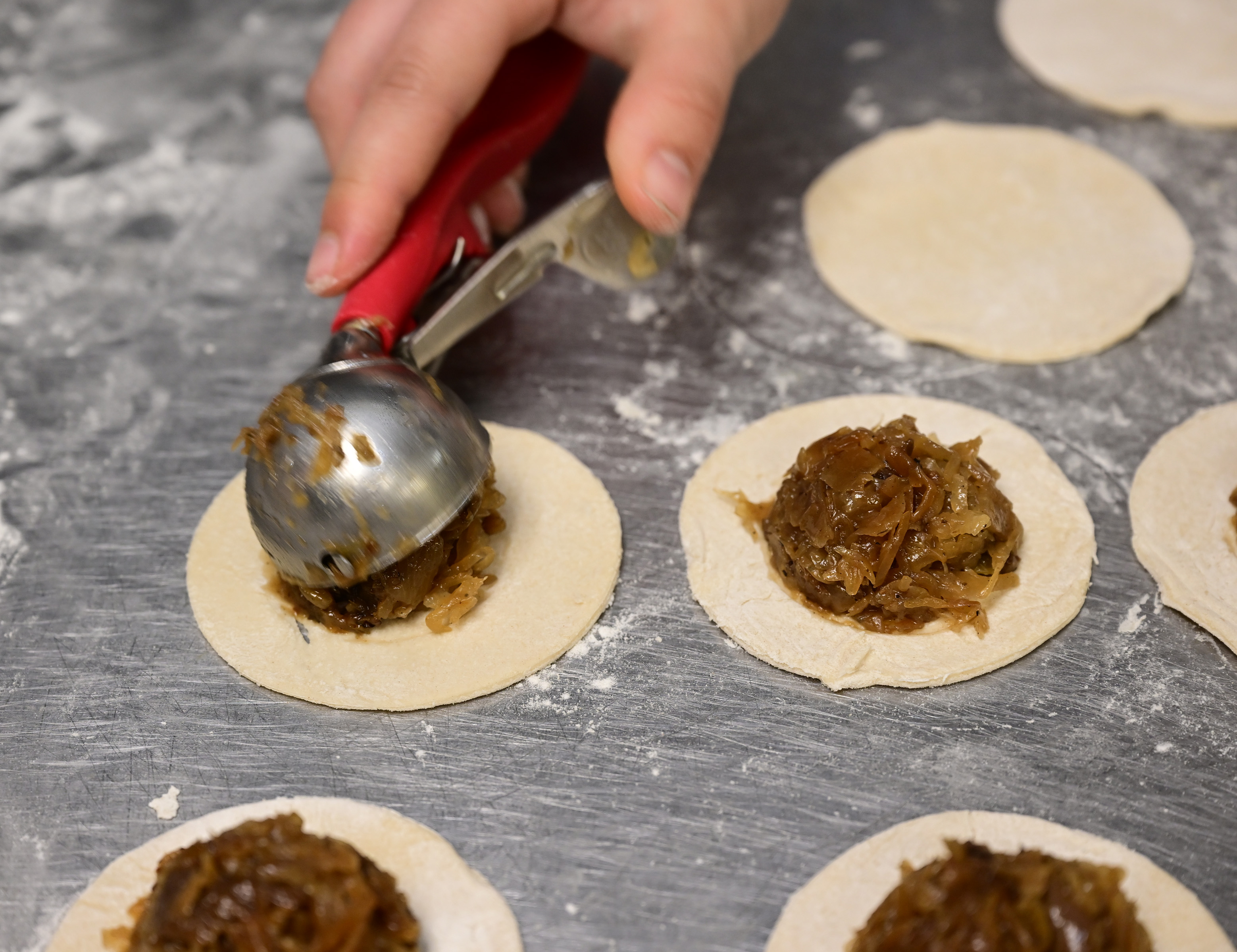
Fold one side over, leaving a lip of space between the edge and the filling. This is where you can crimp, fold or braid. Just make sure it's sealed on the side.
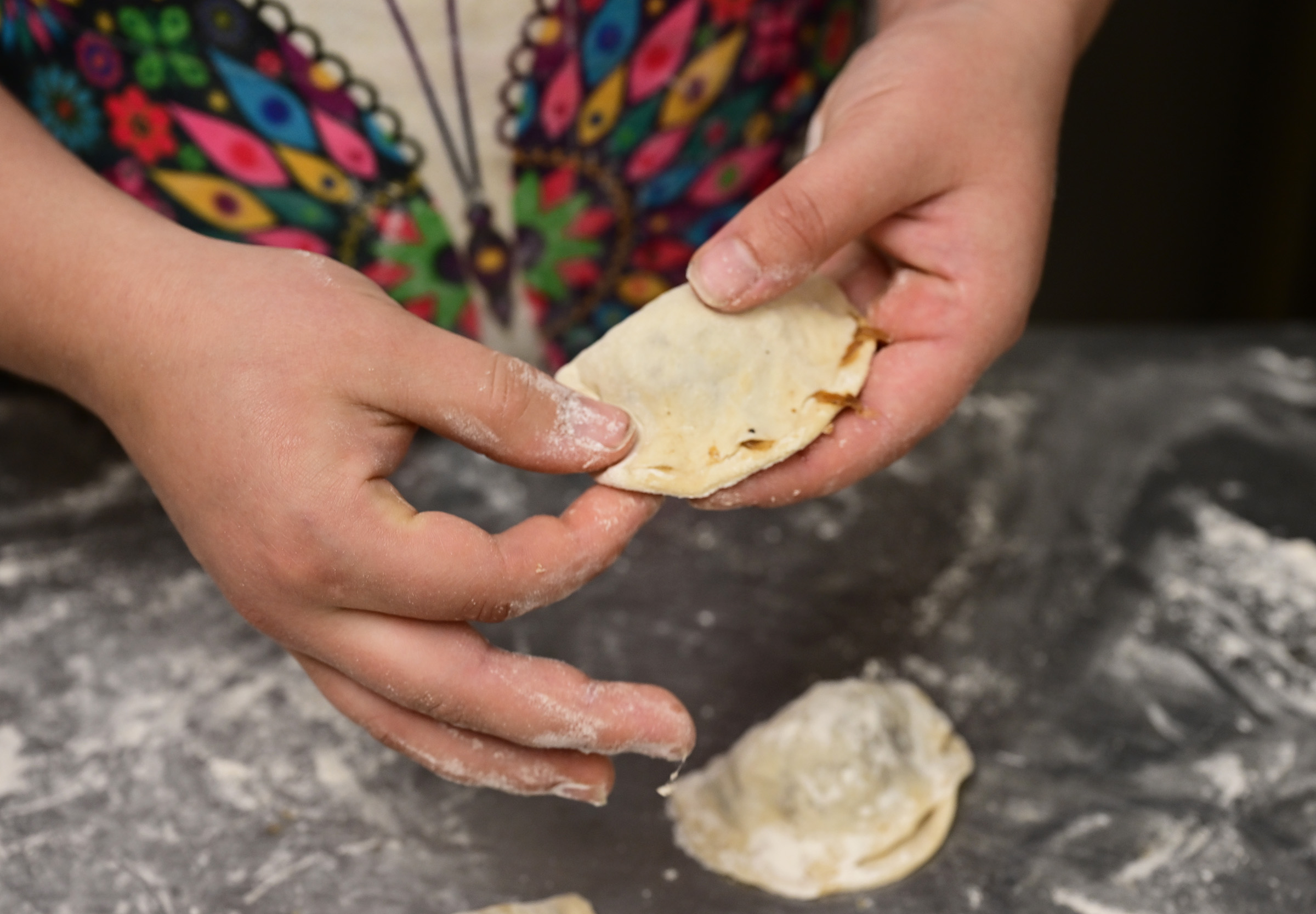
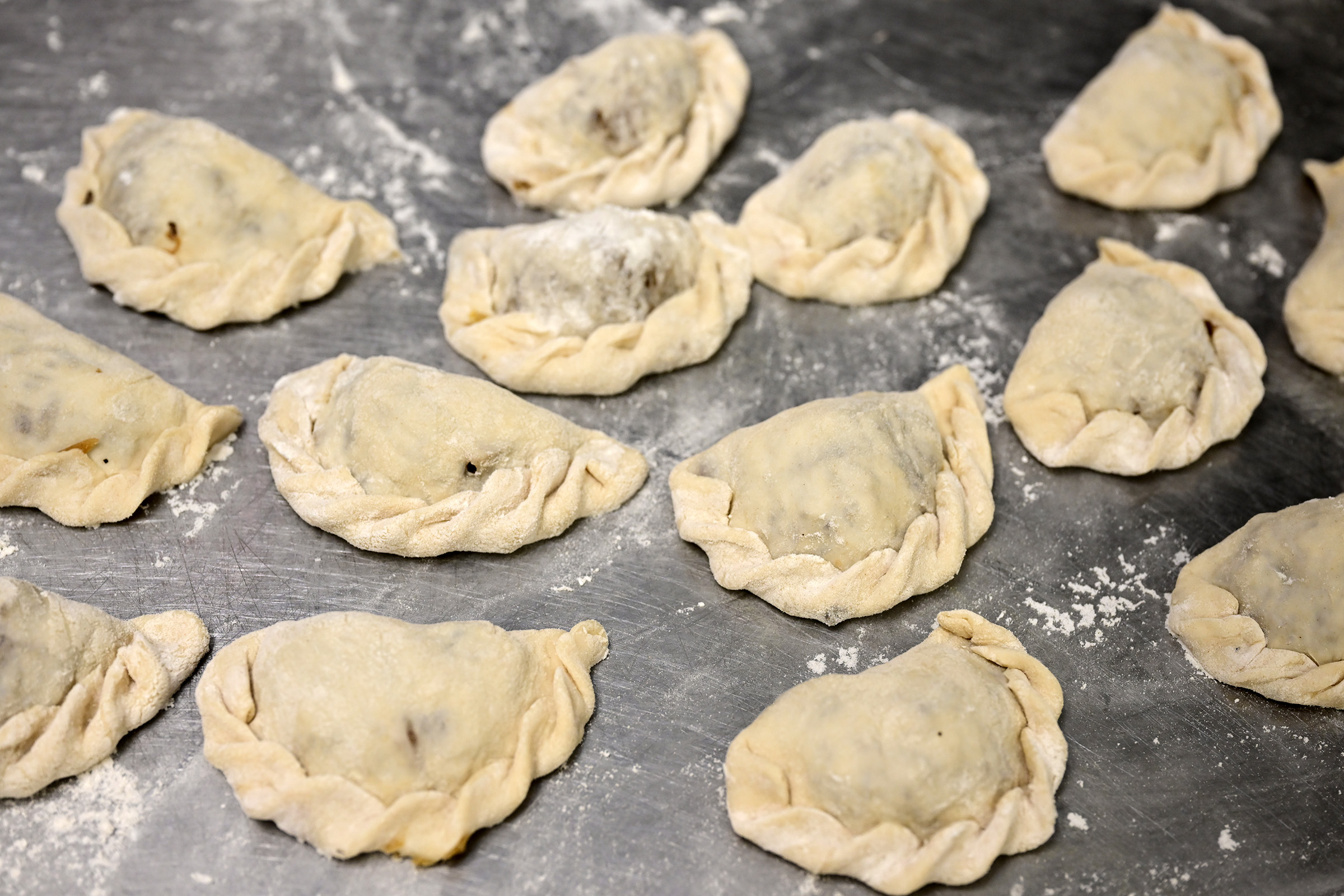
Add your pierogi to a pot of boiling water, being careful not to crowd the pot. Once a minute or two has gone by and the pierogi have floated to the top of the pot, it's time to sieve them out and lay them on a rack to drain.
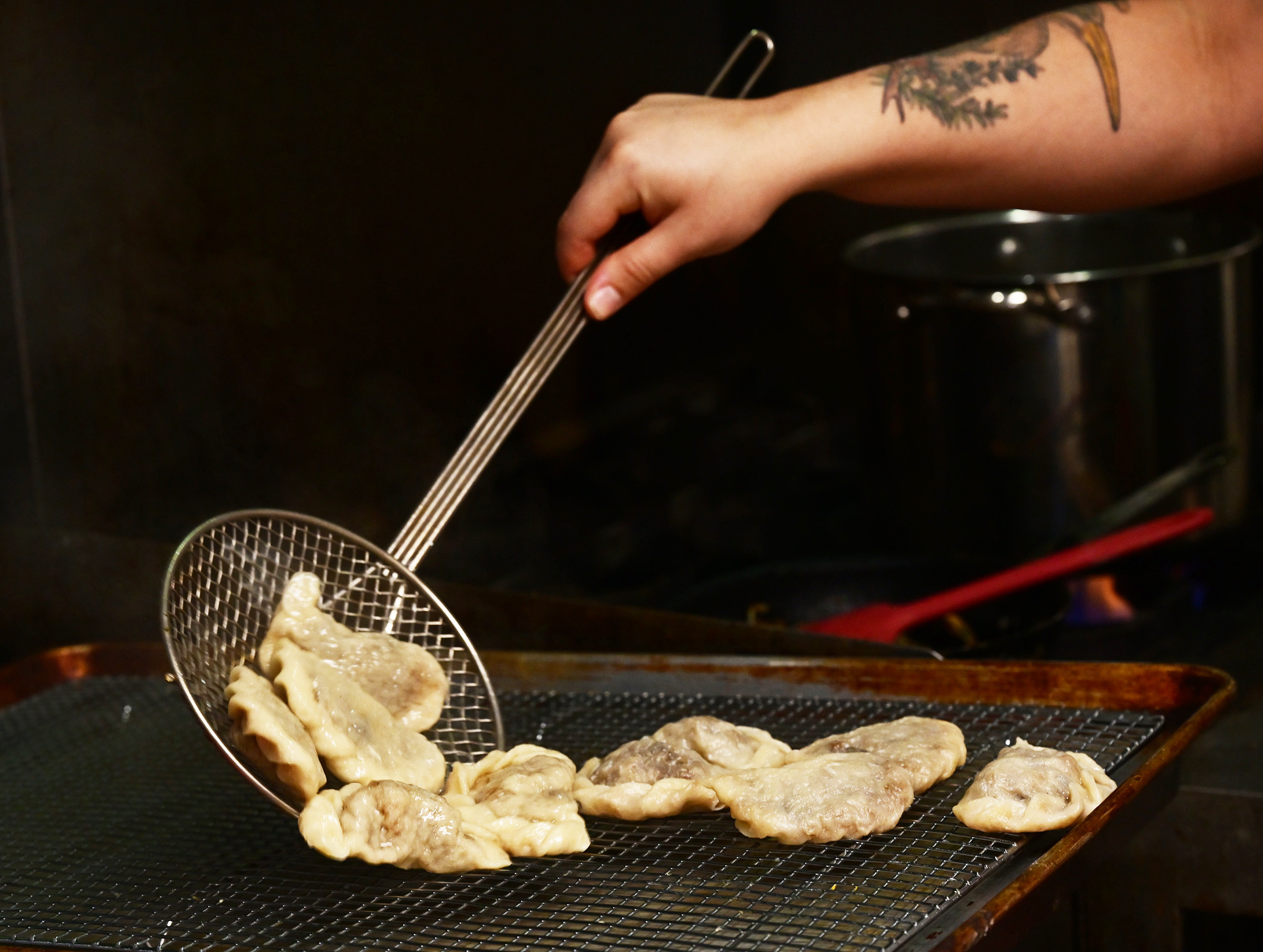
In a frying pan, add a couple tablespoons of your preferred high-heat oil. The oil should cover the whole bottom of the pan. Once it is a nice medium-high heat, add pierogi and crisp them up on each side until golden brown.

Serve with caramelized onions, sour cream and fresh dill.
Makes about 48 pierogi.
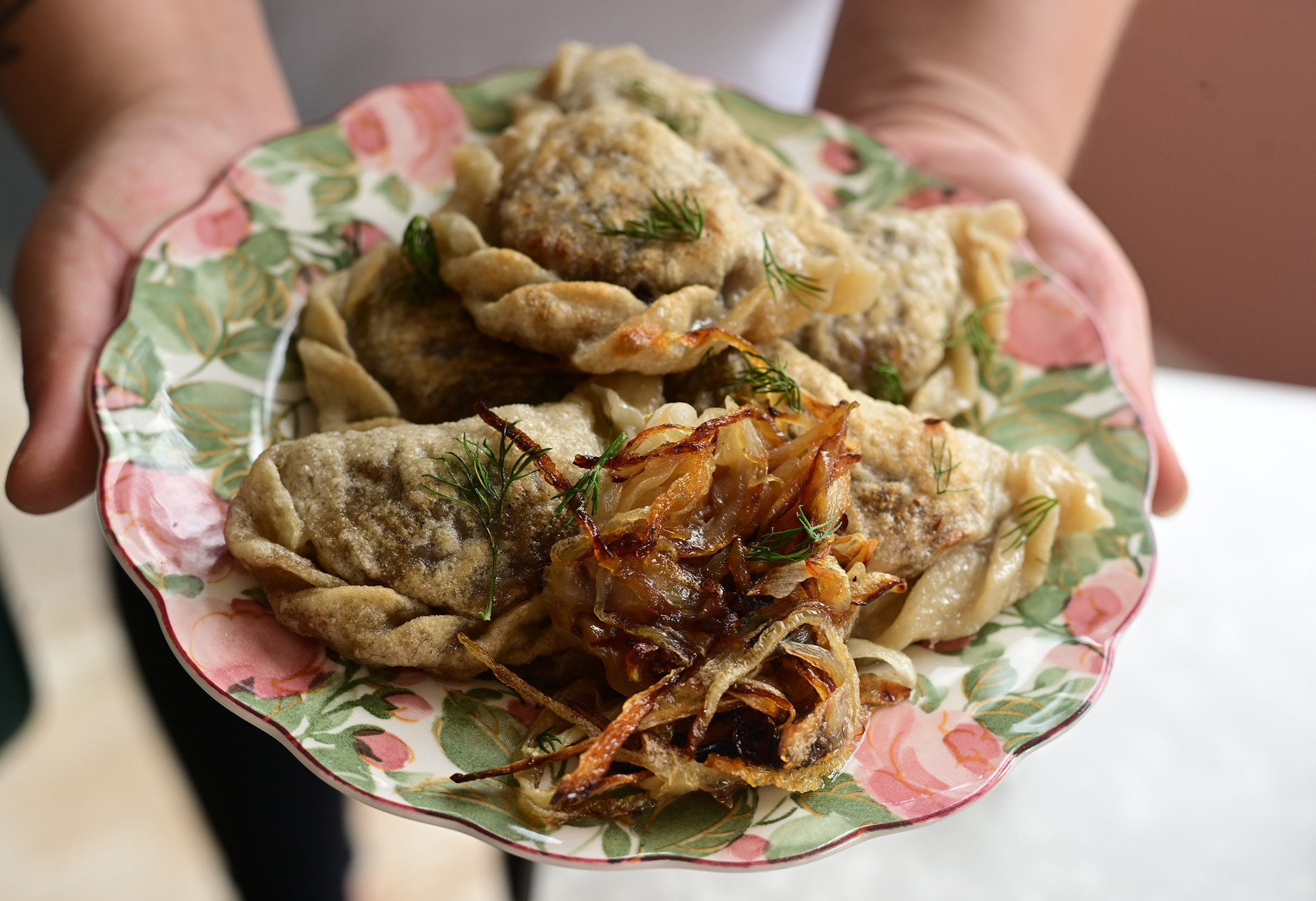
— Olive Visco, Polska Laska

